fall inside a hole
DD51 (1973)
First written September 13, 2023Expanded November 2025
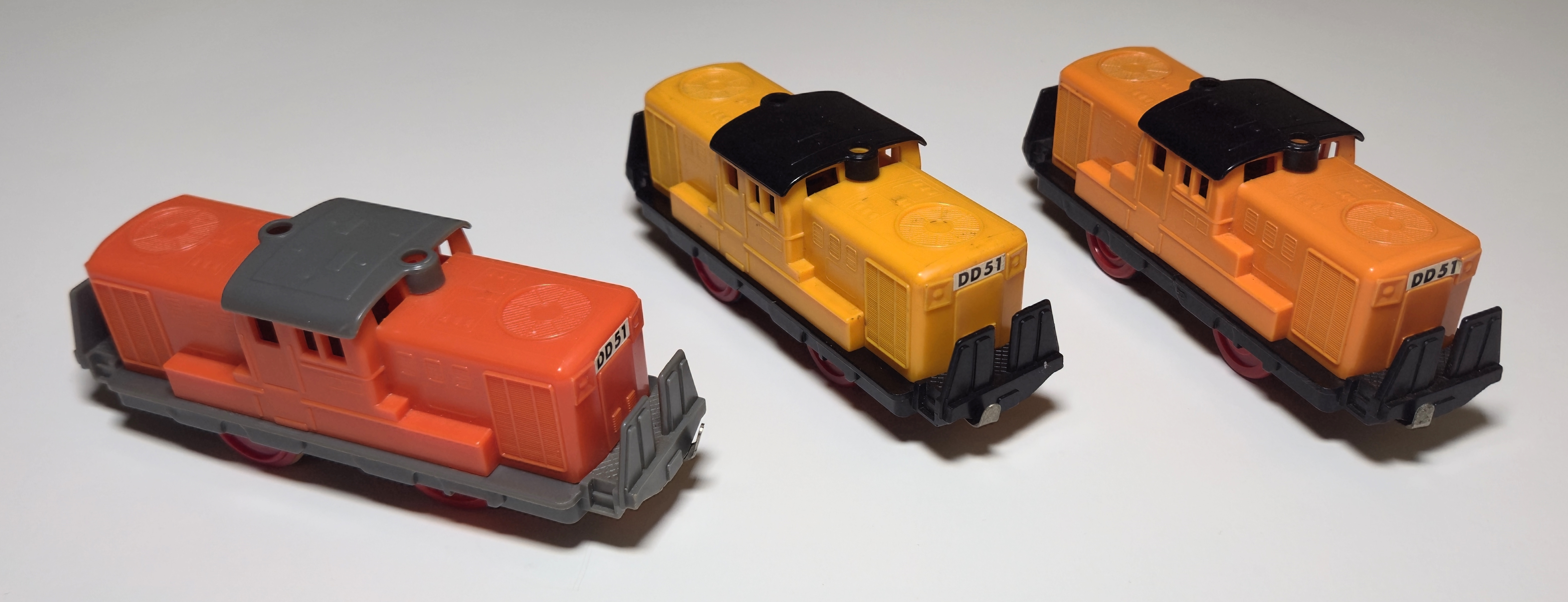
Nearly 650 DD51s were built between 1962 and 1978. They were designed to be more powerful than D51 and faster than C62 steam locomotives still in use in the 1960s and mid 1970s. It seems the DD51 was originally met with similar feelings as diesel locomotives that displaced steam in Britain and nicknames included the "red pig" and "paperweight." As of 2021, ten DD51s were still in regular use, two by JR East and eight by JR West. The D51 is a classic Plarail tooling and was produced almost unchanged between the early 1970s and the mid 1990s when it was updated to new power, most commonly in orange with black chassis that did not closely match its usual more reddish appearance.
DD-51 Diesel Locomotive (1973)
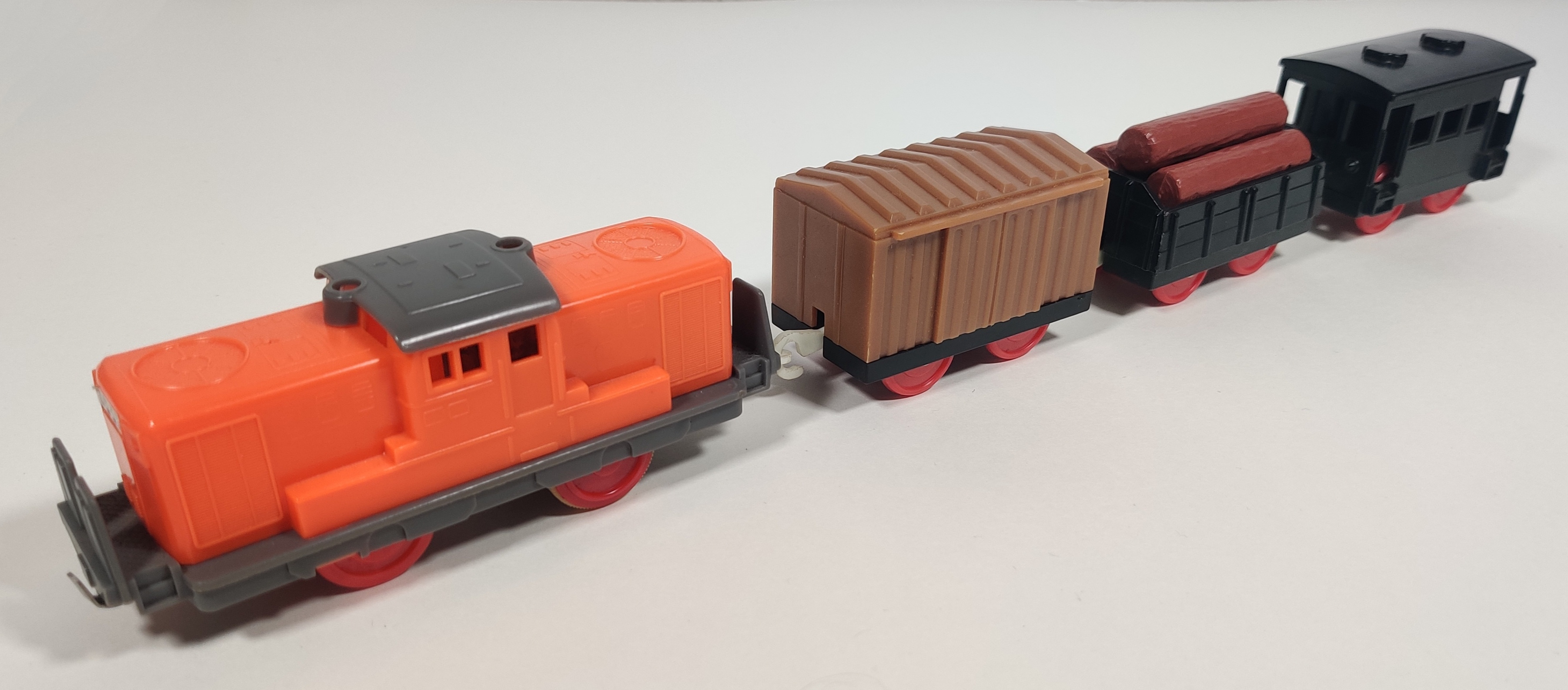
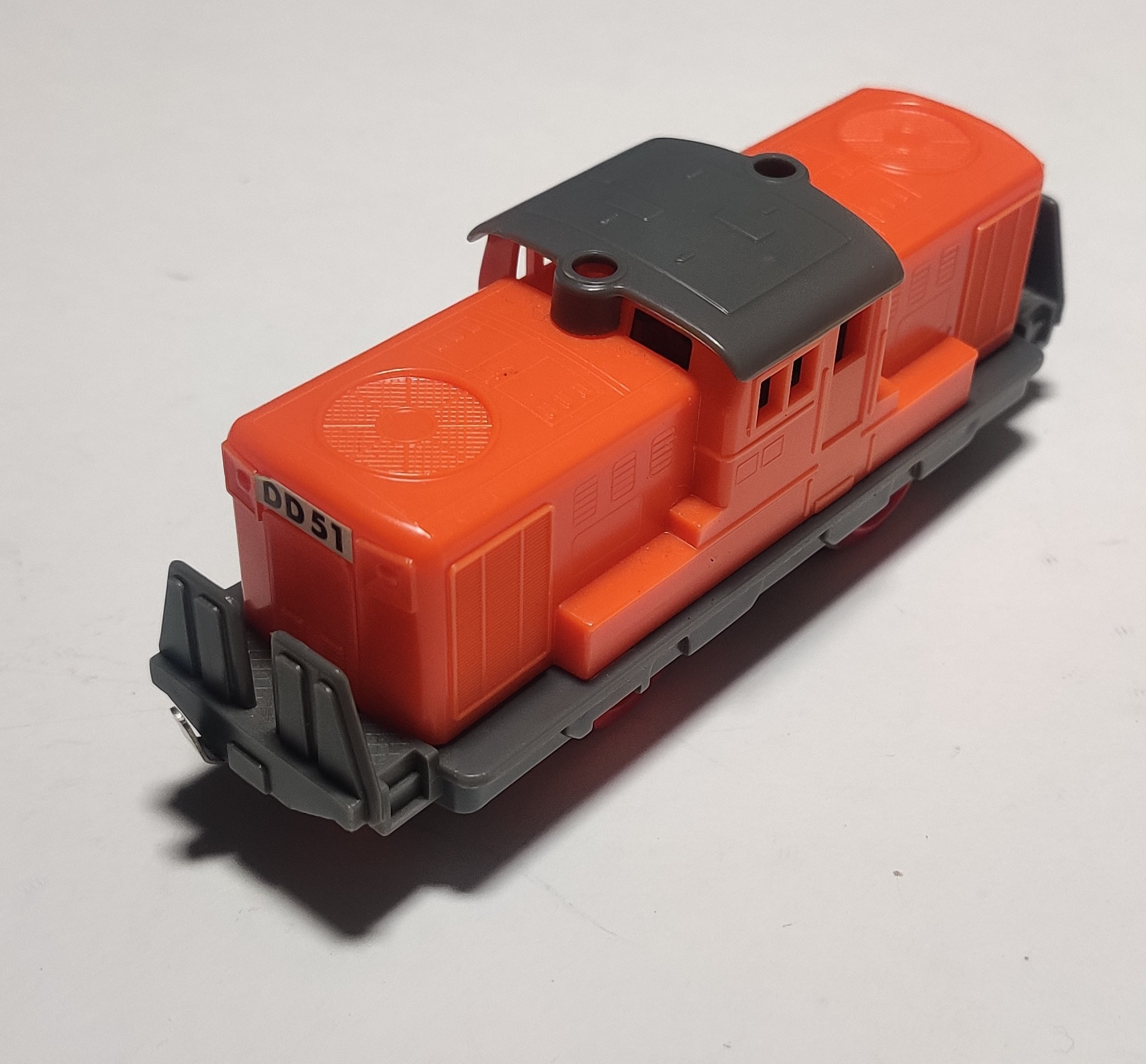
The first DD51 released in 1973 in a second generation style box with three short 1970s freight cars. This DD51 has a grey chassis and roof with orange body and red wheels. A boxed example of this release of DD51 can be seen in the Plarail Museum. The freight cars include a small box car, log car with three logs, and a Japanese brake van. My 1973 DD51 was bought individually and the cars shown above are from a period Freight Cars release.
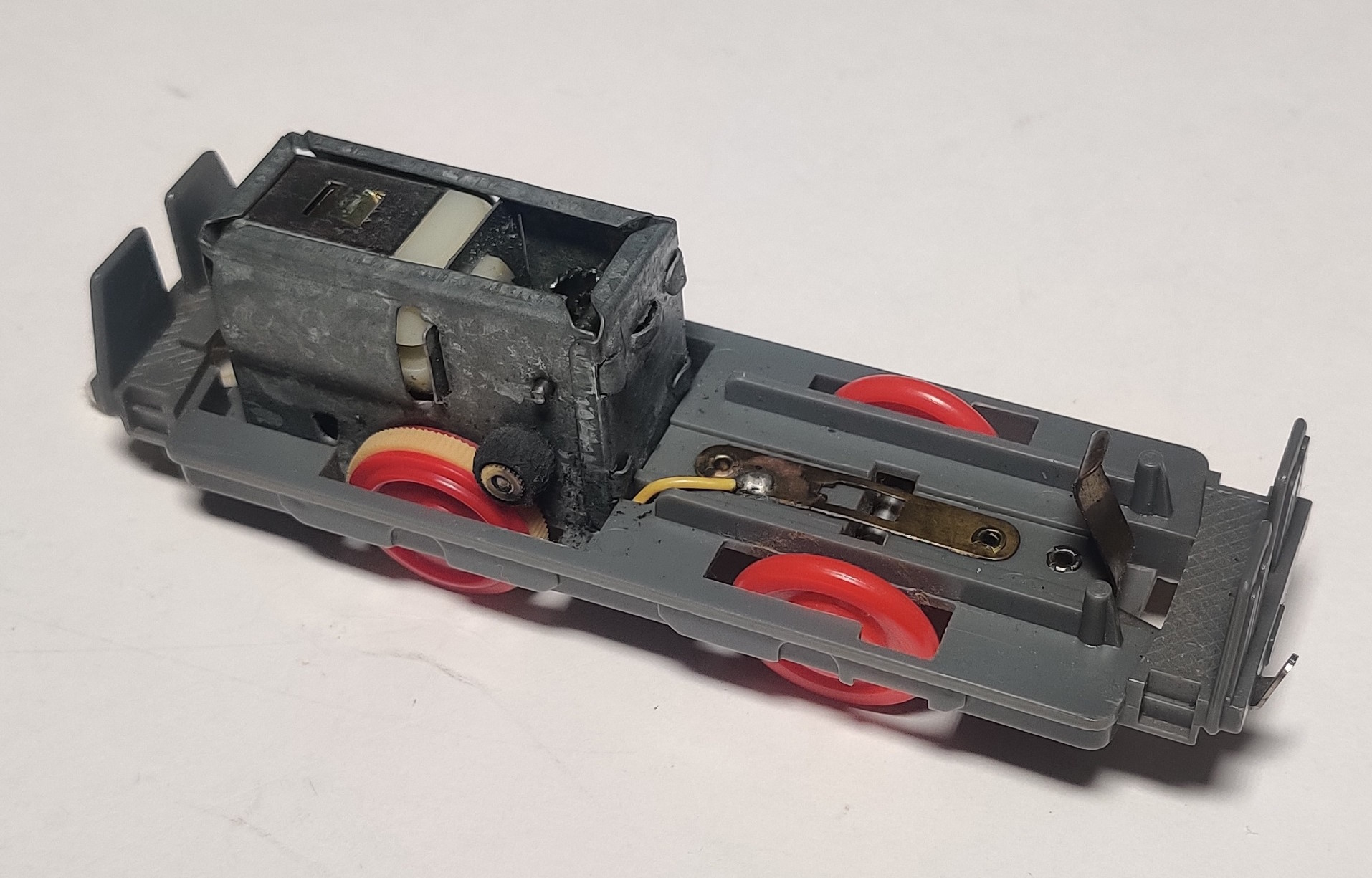
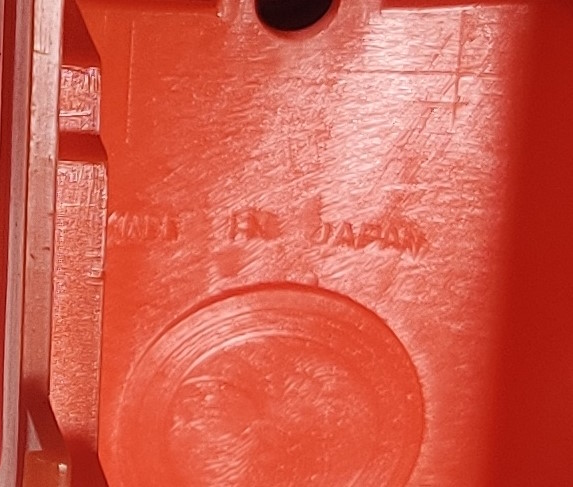
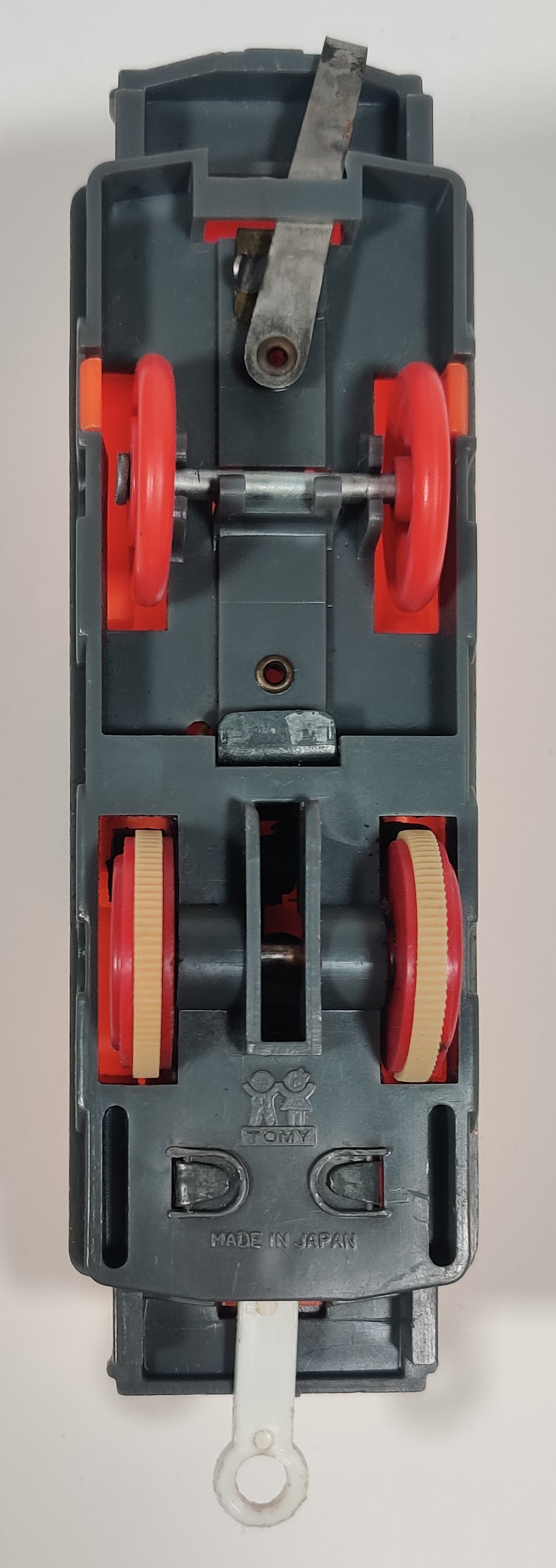
The gearbox used at this time is the old all-metal rim drive type. The tires on my example have been replaced with shaved-down rubber pulleys as described here. The rear wheels are the older thinner type with no additional concentric ring, but the tires have been replaced with modern ones. The DD51 body shell is also marked made in Japan. The DD51 is equipped with the longer "dog bone" style coupling that did not originally have a slit in the loop connector.
DD-51 Diesel Locomotive (1974)
In 1974 the DD51 was rereleased with the same consist in a third generation box, still using the metal gearbox but with the older style of thinner wheels with no additional concentric ring on the side.
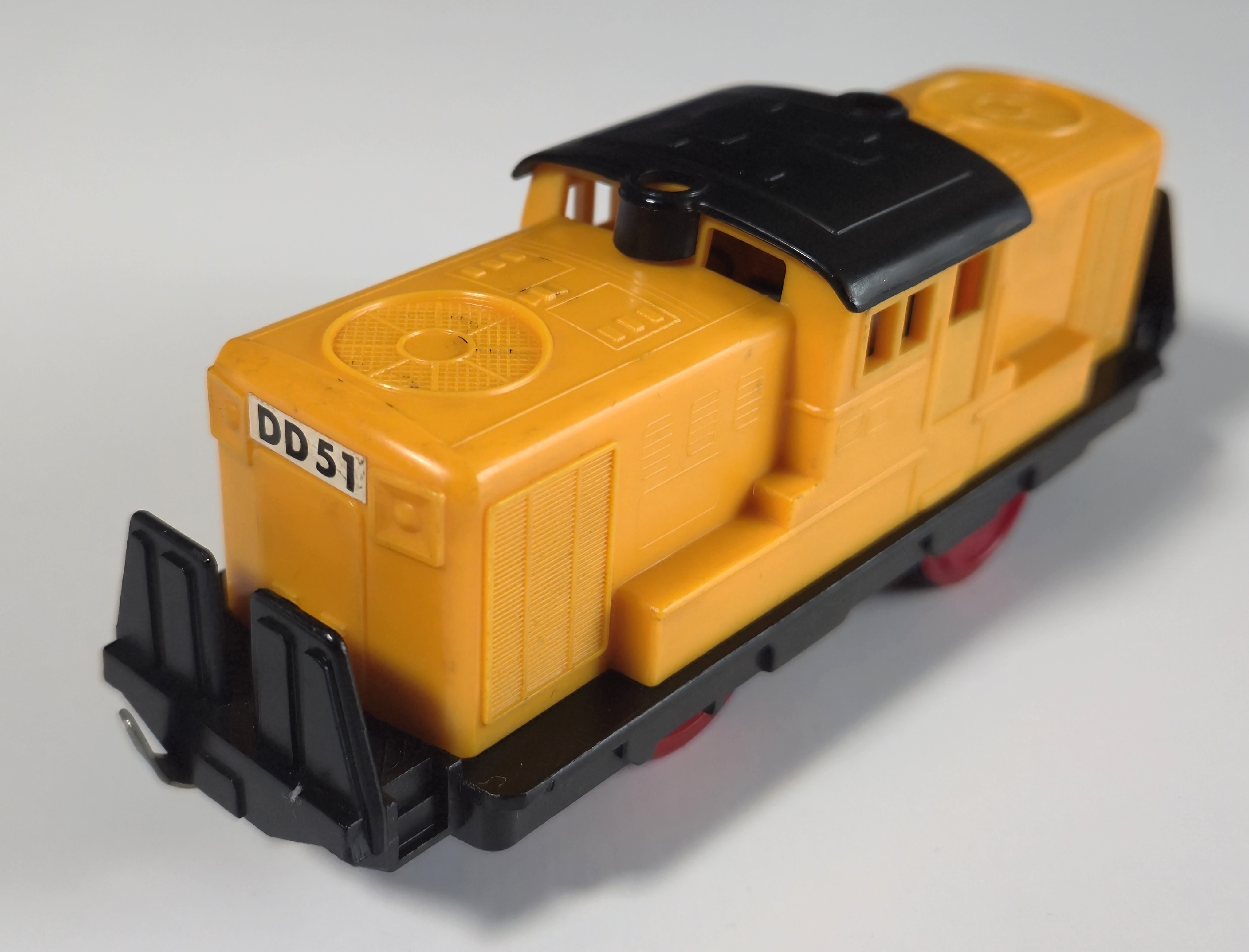
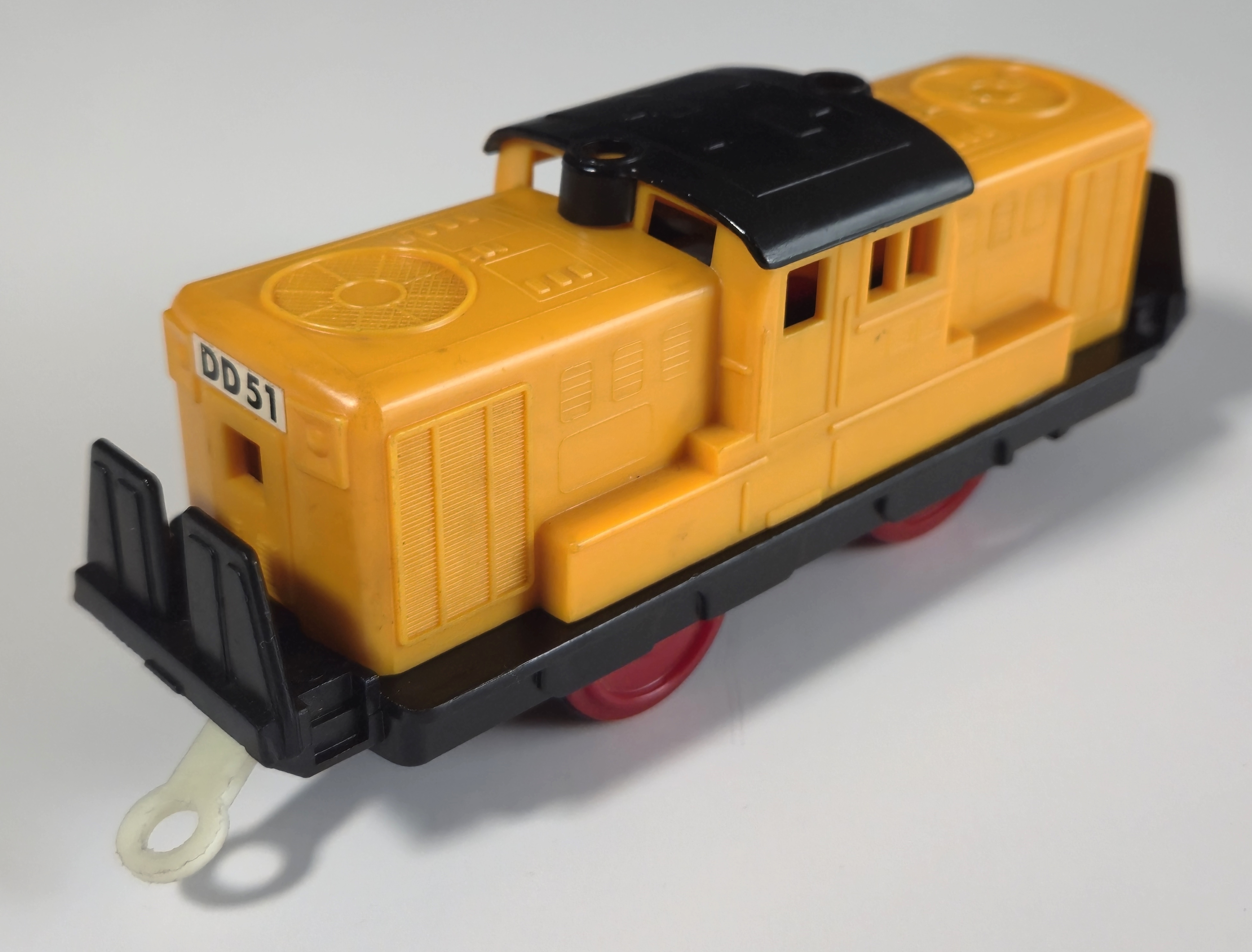
The chassis and roof colors were changed to black and the body color became a lighter orange, although the box still showed the original grey version. This box can also be seen in the Plarail Museum.
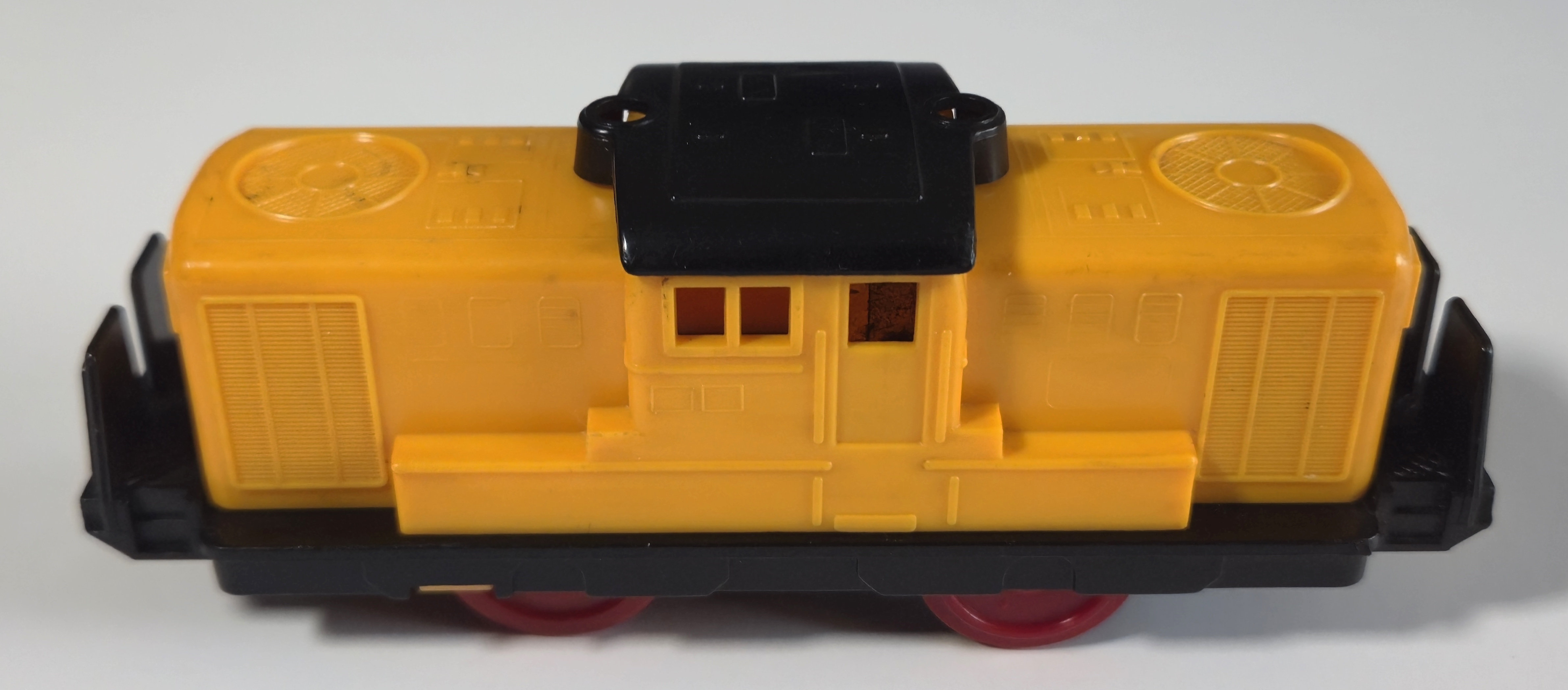
These DD-51s are a lighter and perhaps more yellowy orange than the more long-lasting style that followed.
DD-51 Diesel Locomotive (1976)
In 1976 the metal gearbox DD51 in a darker orange was released individually in a fourth generation "train" box as DD-51 ディーゼル DD-51 Diesel Locomotive. Two different styles of fourth generation box were produced, one blue with a DD51 Diesel Locomotive sticker and one in a specifically printed greyish-green box. Both can be seen on this BluePlasticTracks thread.
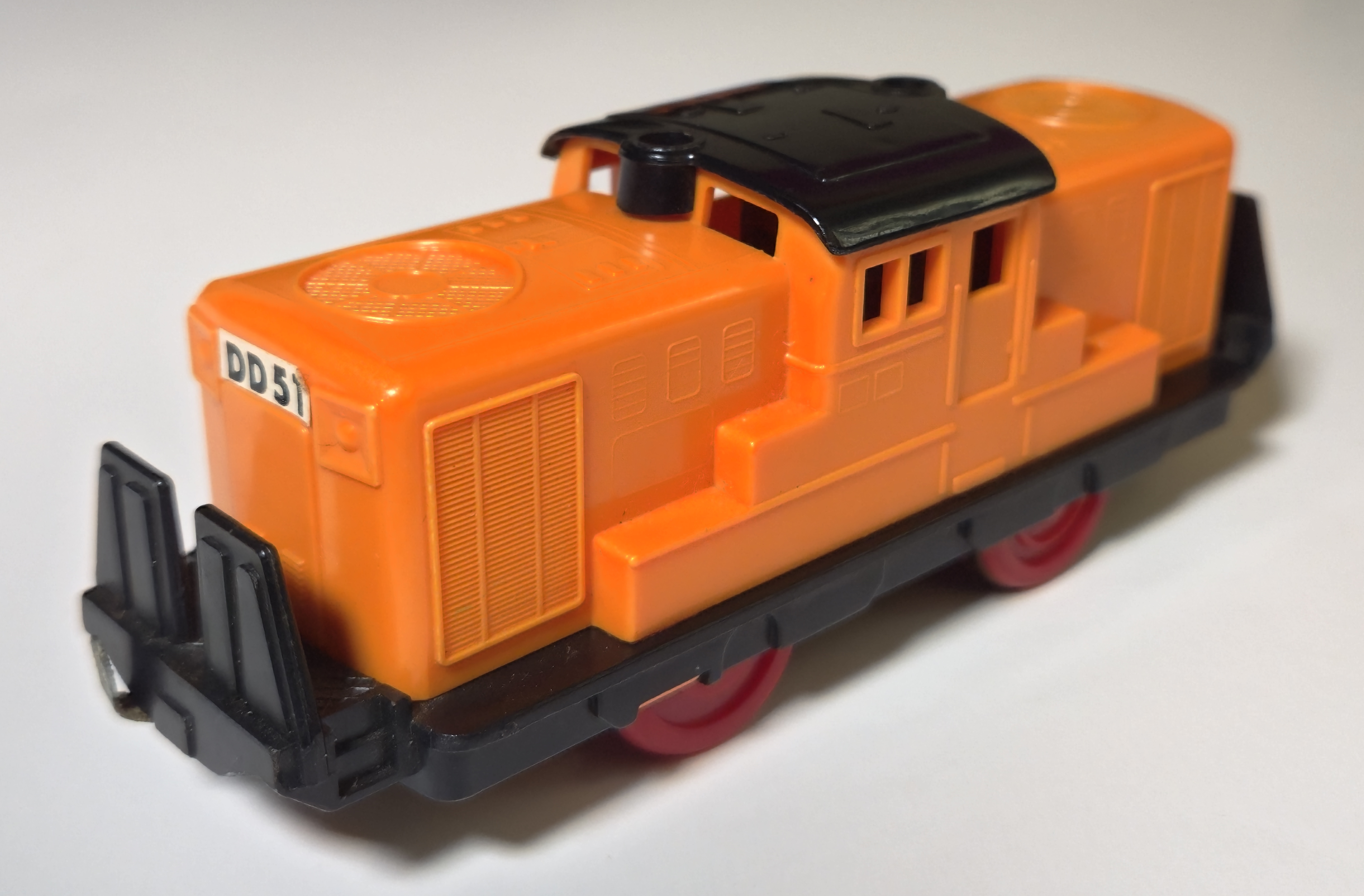
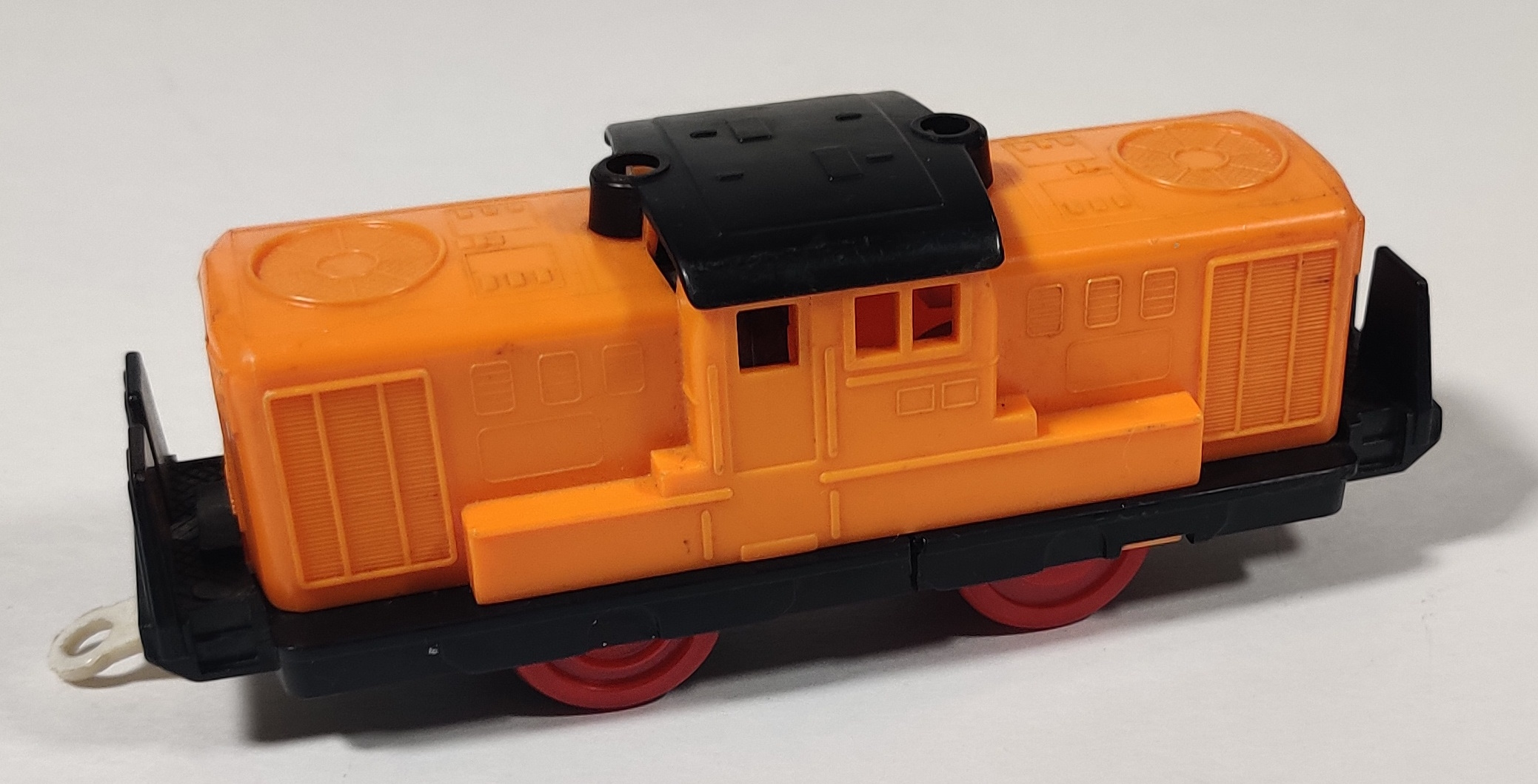
I have come across one of these mid-late 1970s DD51s with black chassis and roof as well as the metal gearbox and bent-up power switch. By this time the additional ring was present in the driving wheel tooling.
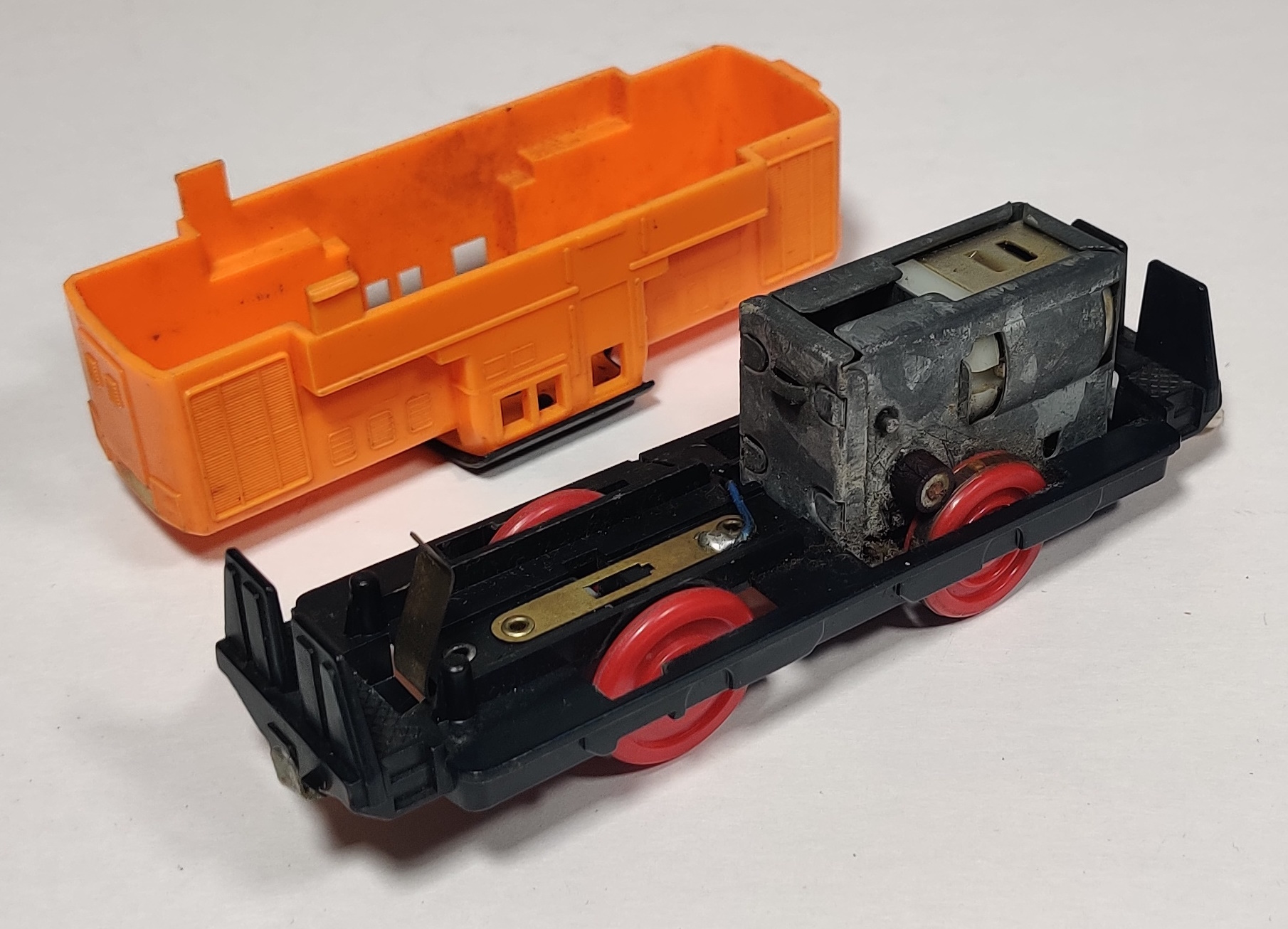
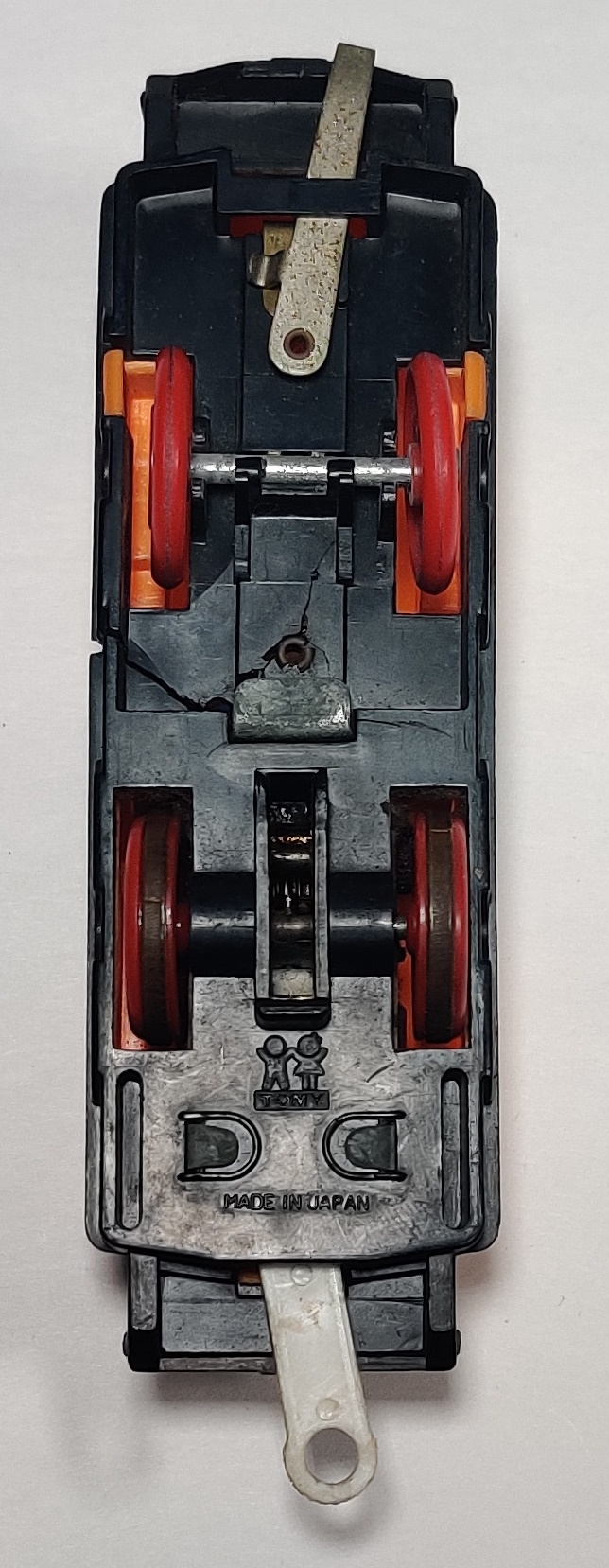
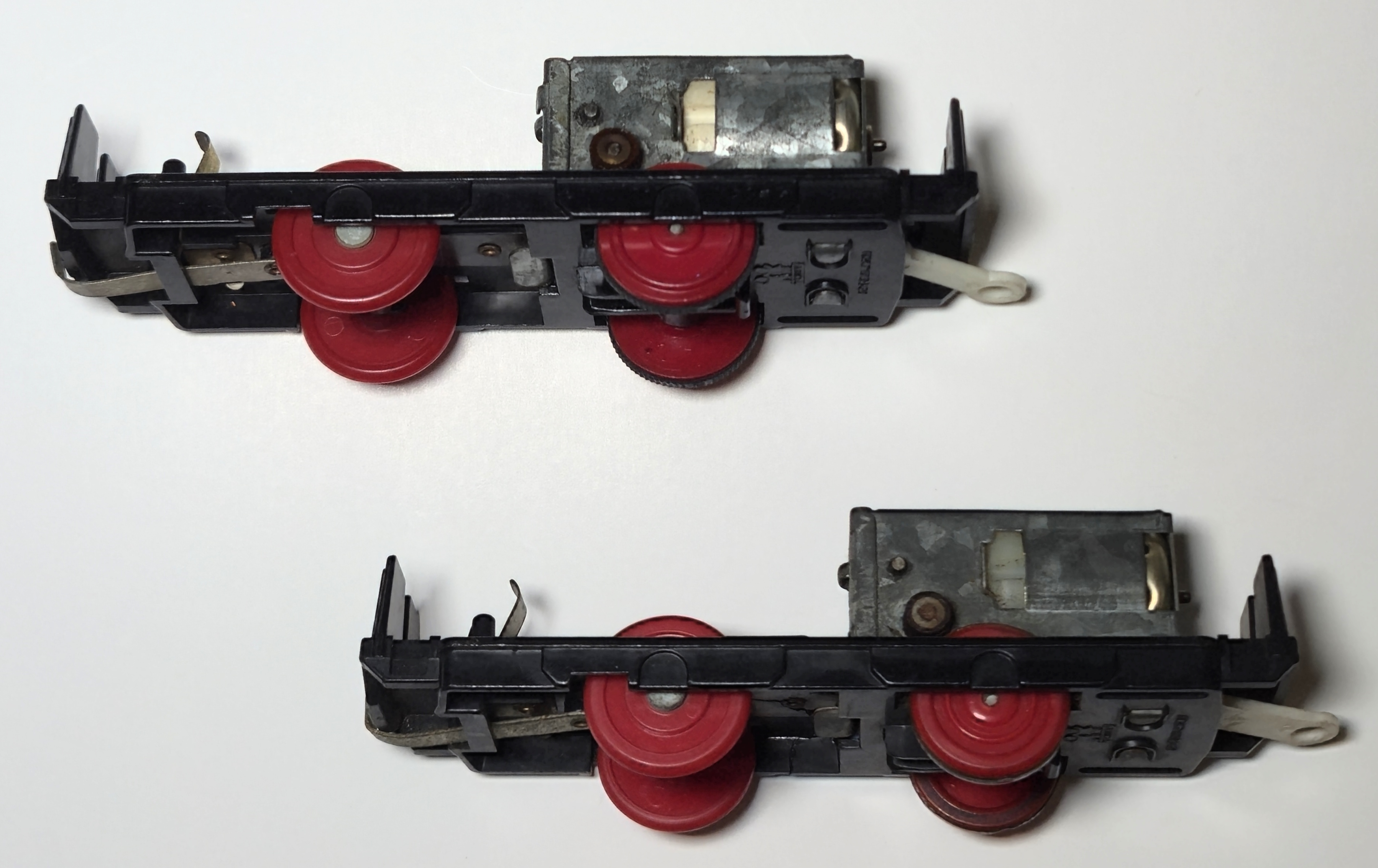
The gearbox puts the plastic chassis under tension, so these older chassis are sometimes cracked and split. I glued this one back together after photographing it. On the right is the previous variation of DD-51 chassis with older design of rear wheels.
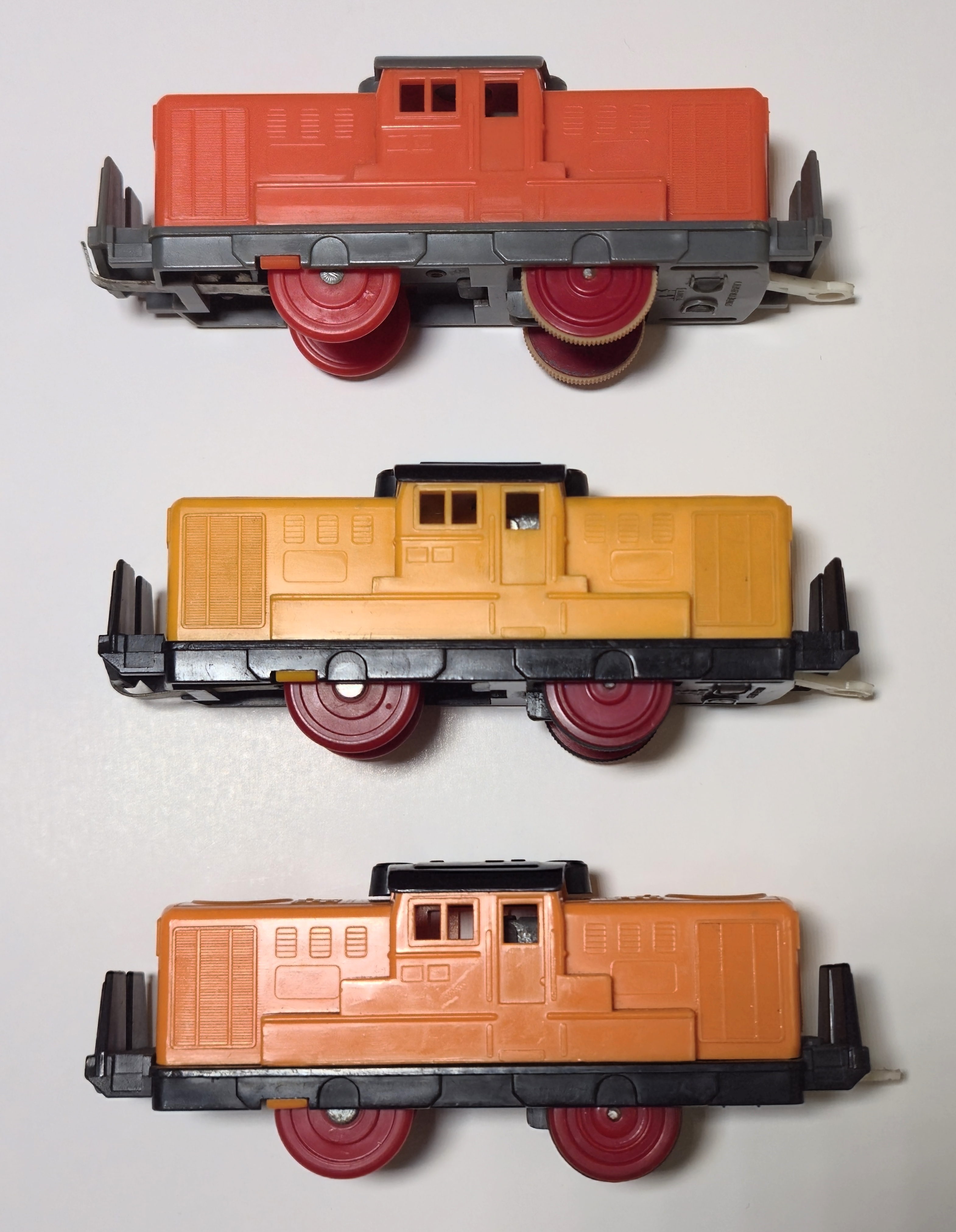
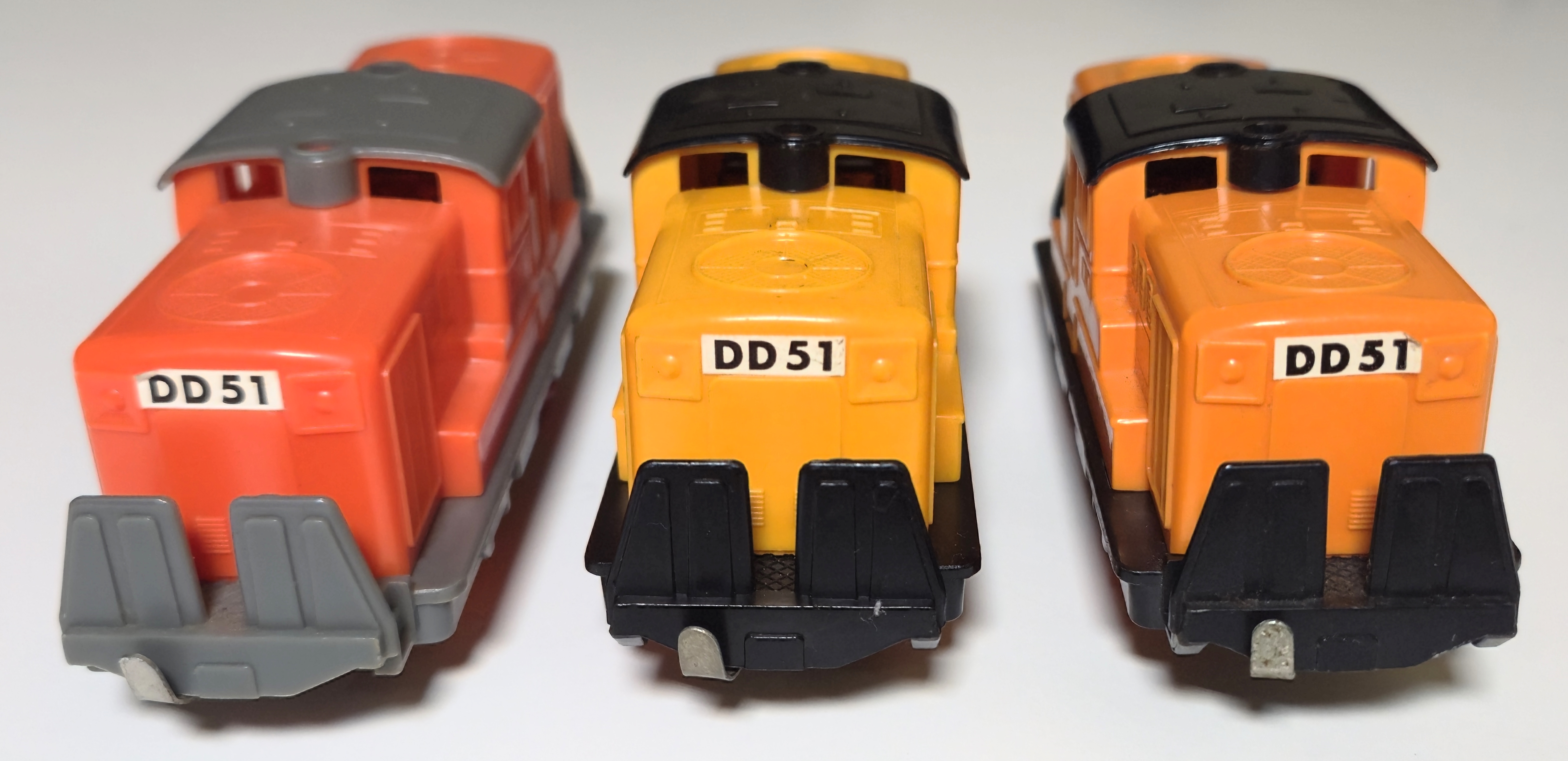
Here are the 1970s color variations of the DD51. I really like they grey version, and the lighter orange one also gives a nice color variation against the longer-lived orange type.
DL-01 DD-51 (1978)
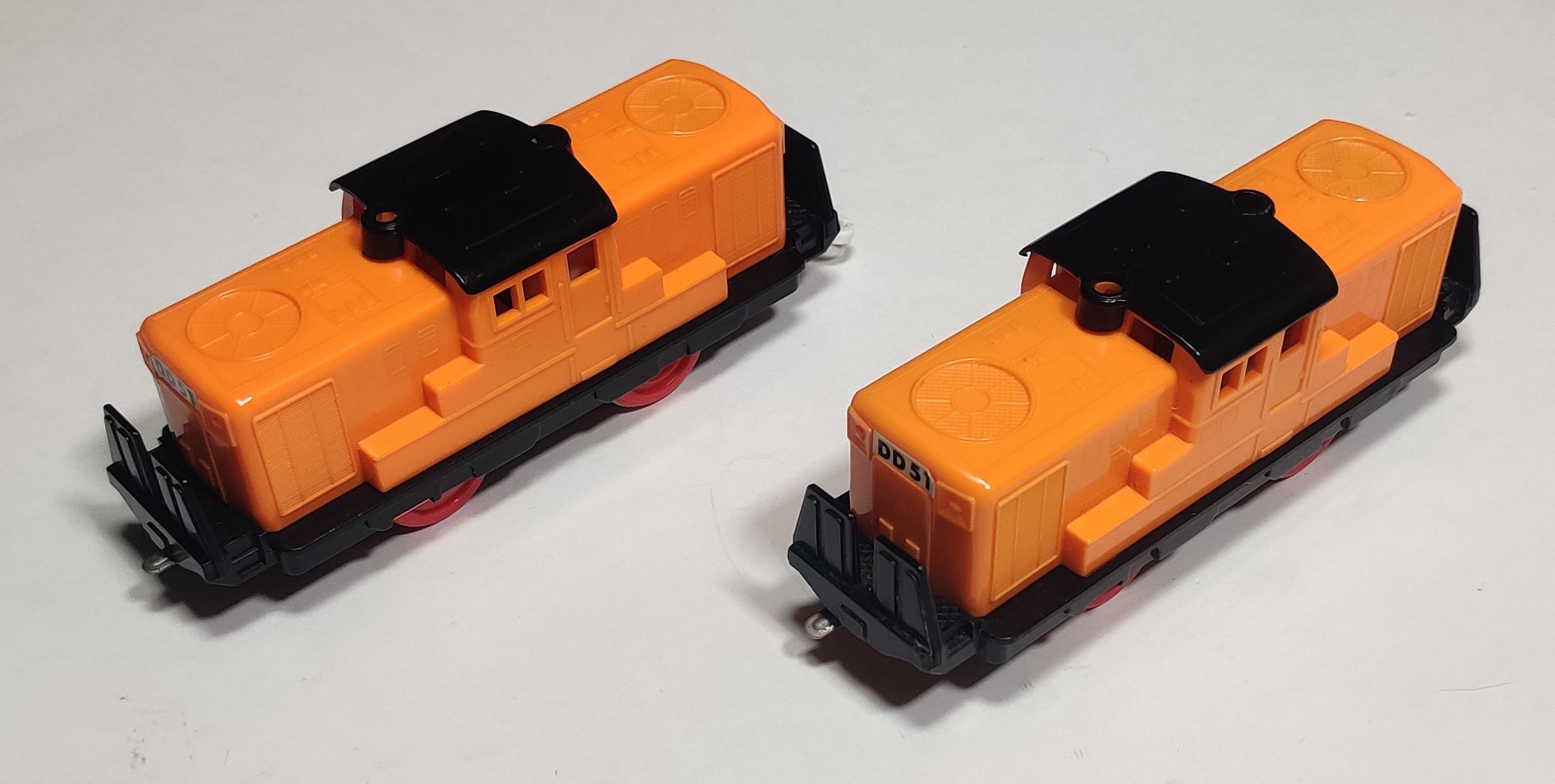
In the late 1970s the DD51 moved away from the all-metal rim drive gearbox and changed over to using the plastic friction-drive gearbox. From 1979 to 1986 the DD51 was produced in the type 5 "EC" box as DL-01 DD-51. Early examples from this generation use a lighter grey for the chassis and roof that match the grey of the EF-58 and EF-66 in the range at the time, which was lighter than the oldest dark grey chassis DD51s.
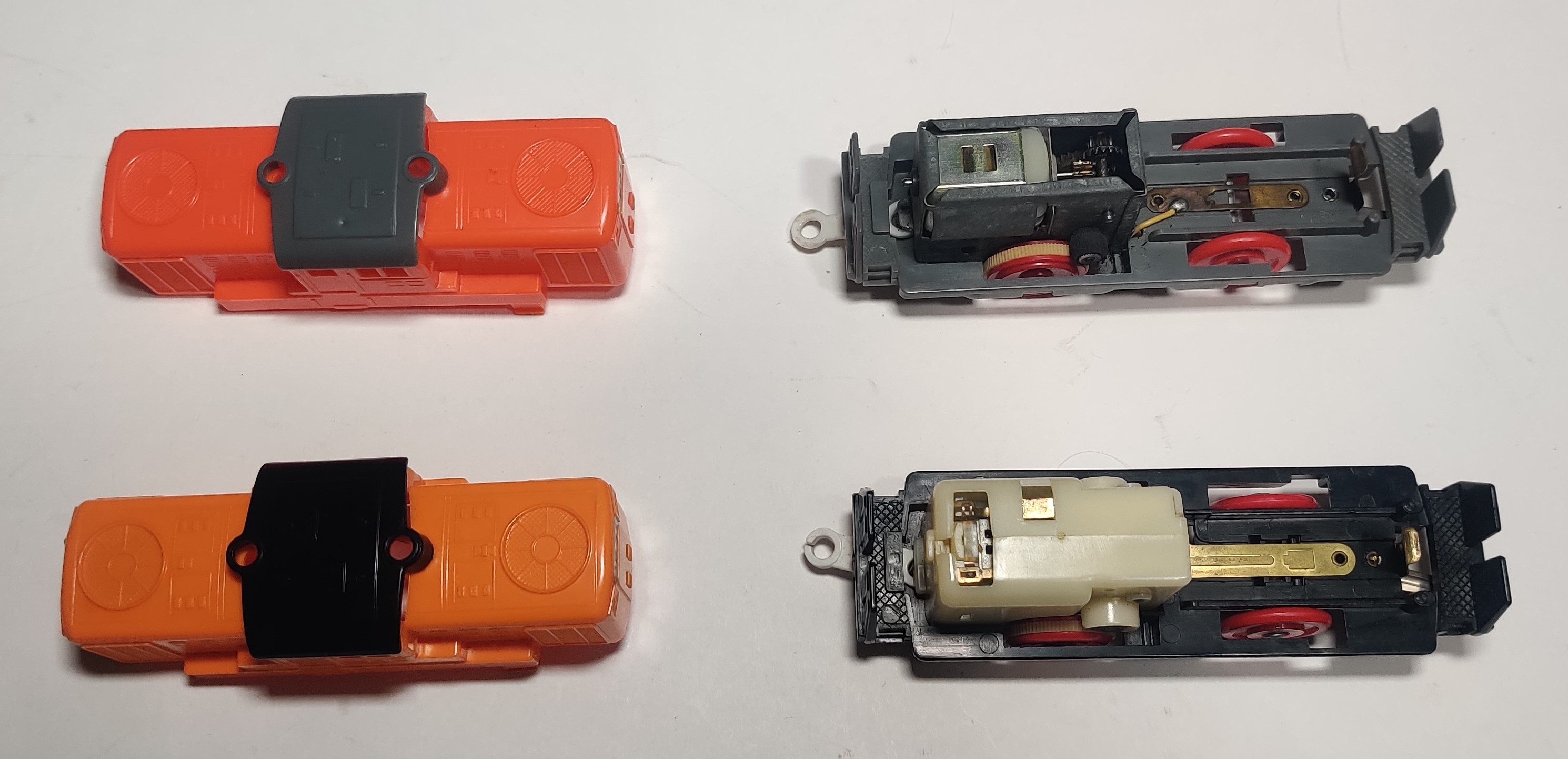
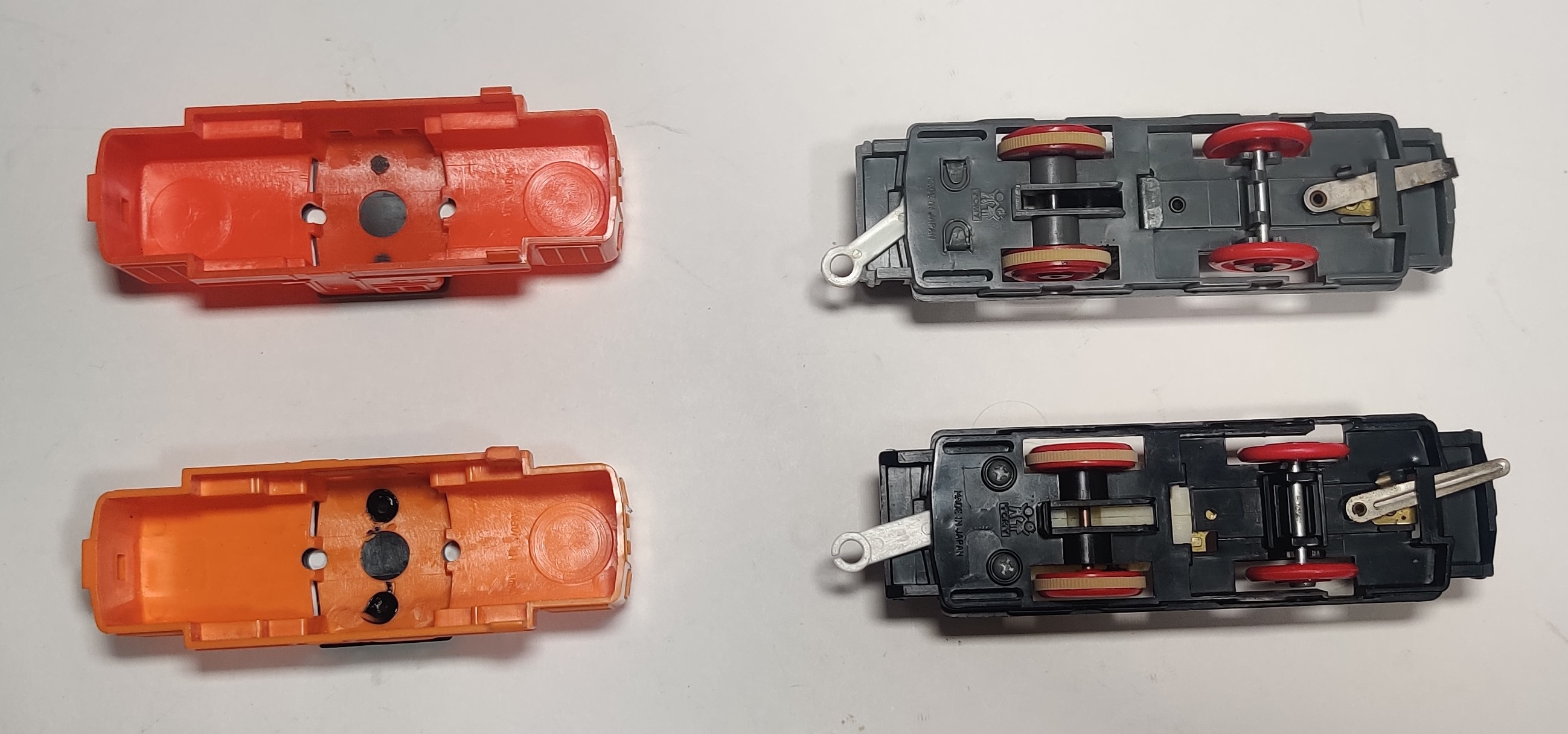
Internally the battery contact strips are different to mate with the plastic rim drive gearbox and the chassis has been changed to accommodate it. The chassis is still marked with the Tomy logo and made in Japan text. The roof of the body shell was also thinned out above the gearbox to fit the new taller plastic style (note the lack of a rear round molding mark like the older style, which was still retained in the front of the shell), meaning that an older body shell will not fit over the plastic gearbox. Like other Plarail trains, later power switches were not bent upwards for whatever reason (one fewer step on the production line?)
DD-51 (1987)
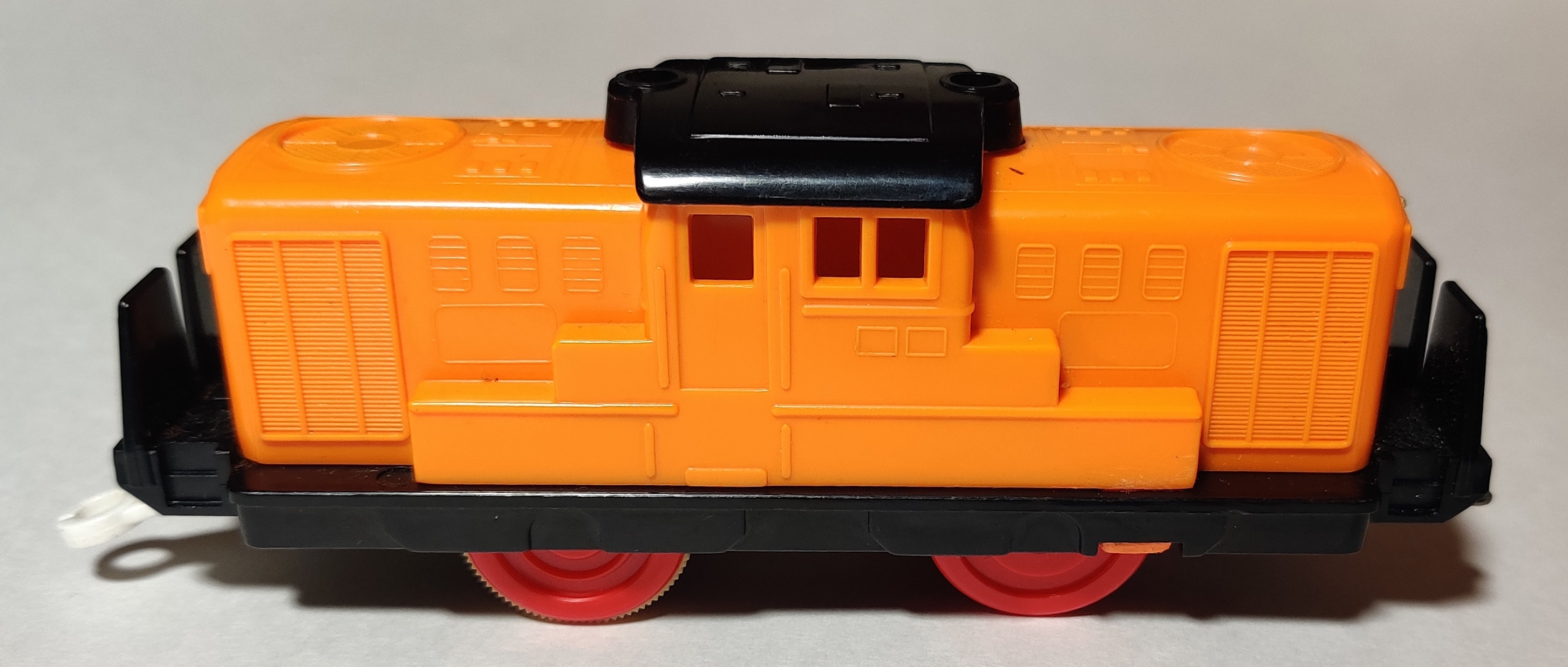
From 1987 to 1993 the old power DD51 was sold in a type 6 box as DD-51. Externally these DD51s look similar to mid 1970s DD51s from after the grey and yellowy-orange colors were changed to the more familiar black and orange.
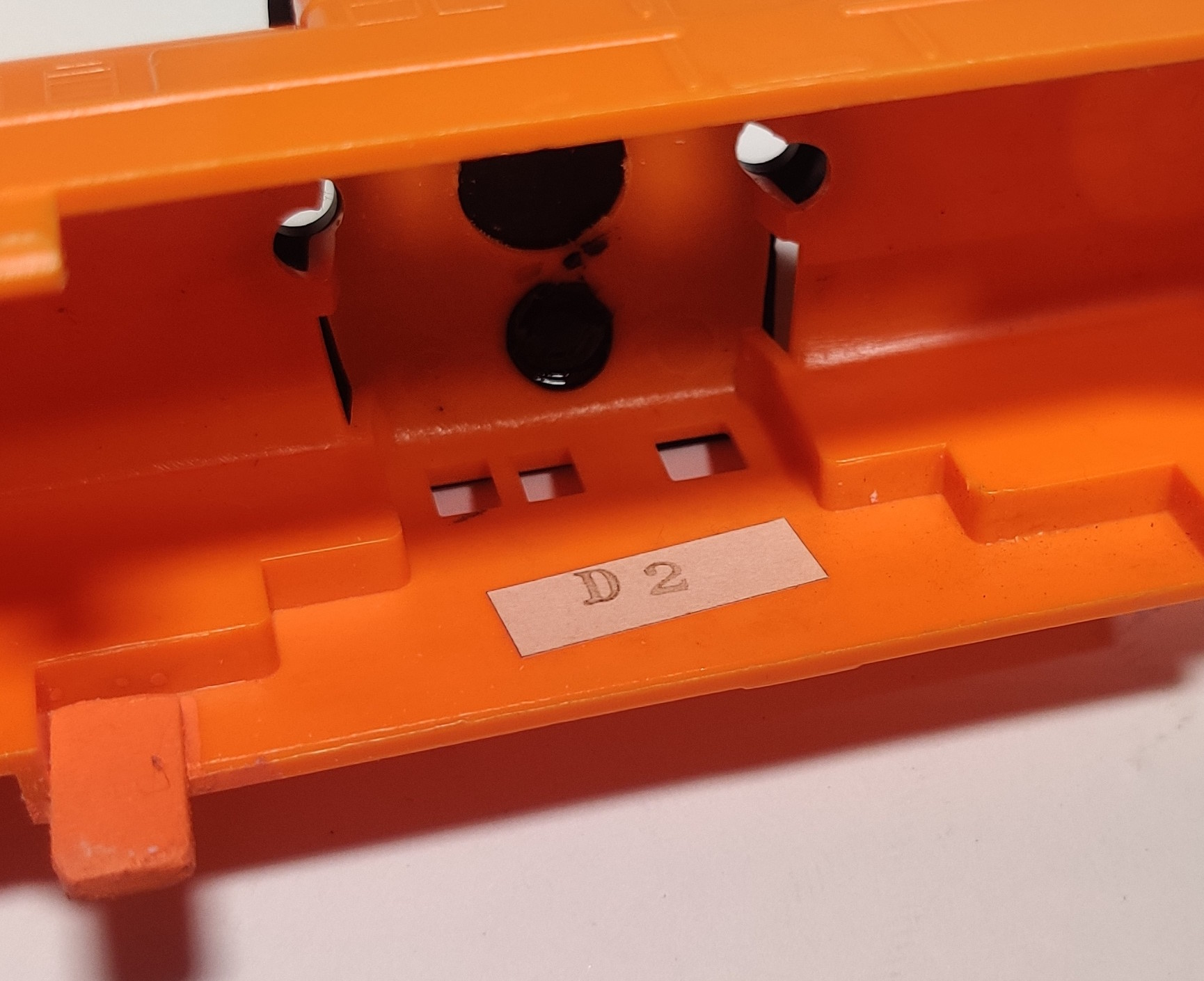
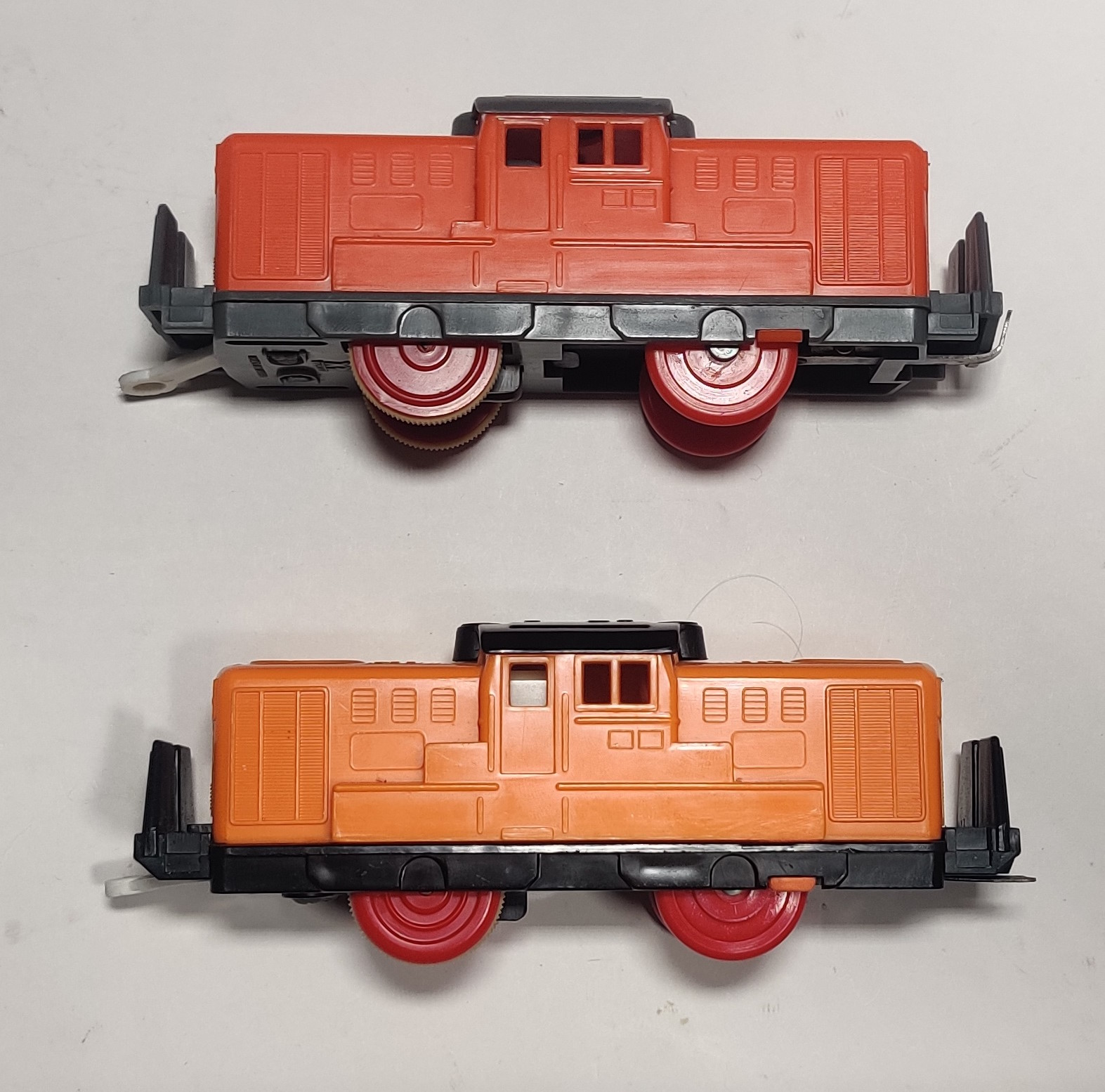
I have two DD51s with plastic rim-drive gearboxes. One is one of the later Japan-produced old power DD51s dating from April 1992 while the other has no production sticker, so it could have been produced in the 1980s or just lost its early 90s sticker over time. The Japanese production stickers used from the early 90s to the end of Japanese production were often stamped onto wide, blank stickers instead of the printed style seen on Thailand-made engines. My 1992 DD51 had a broken body shell clip which I replaced using a small 3D printed replacement available to download here.
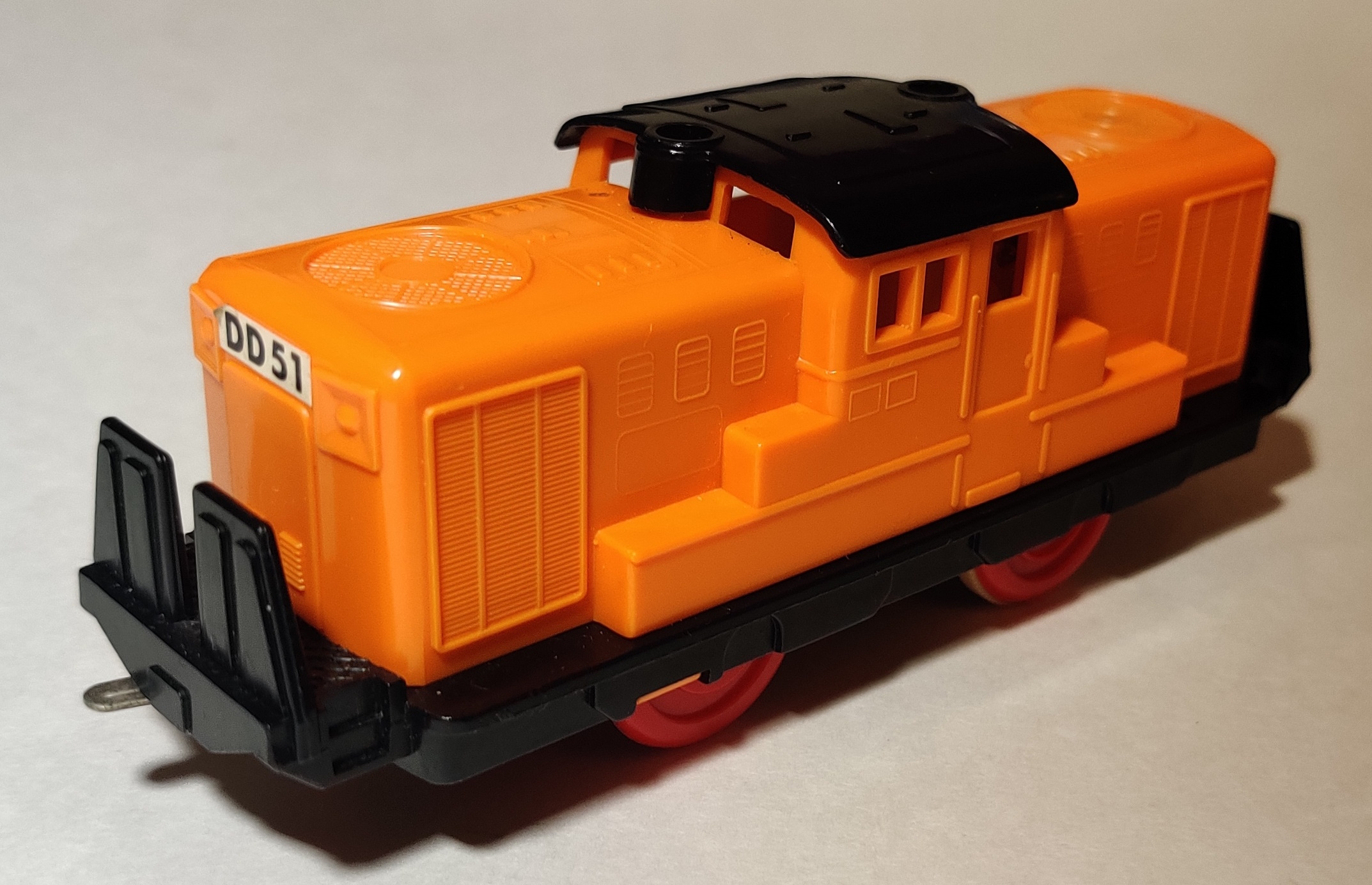
The old power DD51 was one of the later old power engines to be converted to new power, and continued to be produced in Japan while other molds moved to Thailand in the early 90s. I believe some part of this may have been the work involved and the relative "hit" to the design that the large power switch sticking through a portion of the cab would cause.
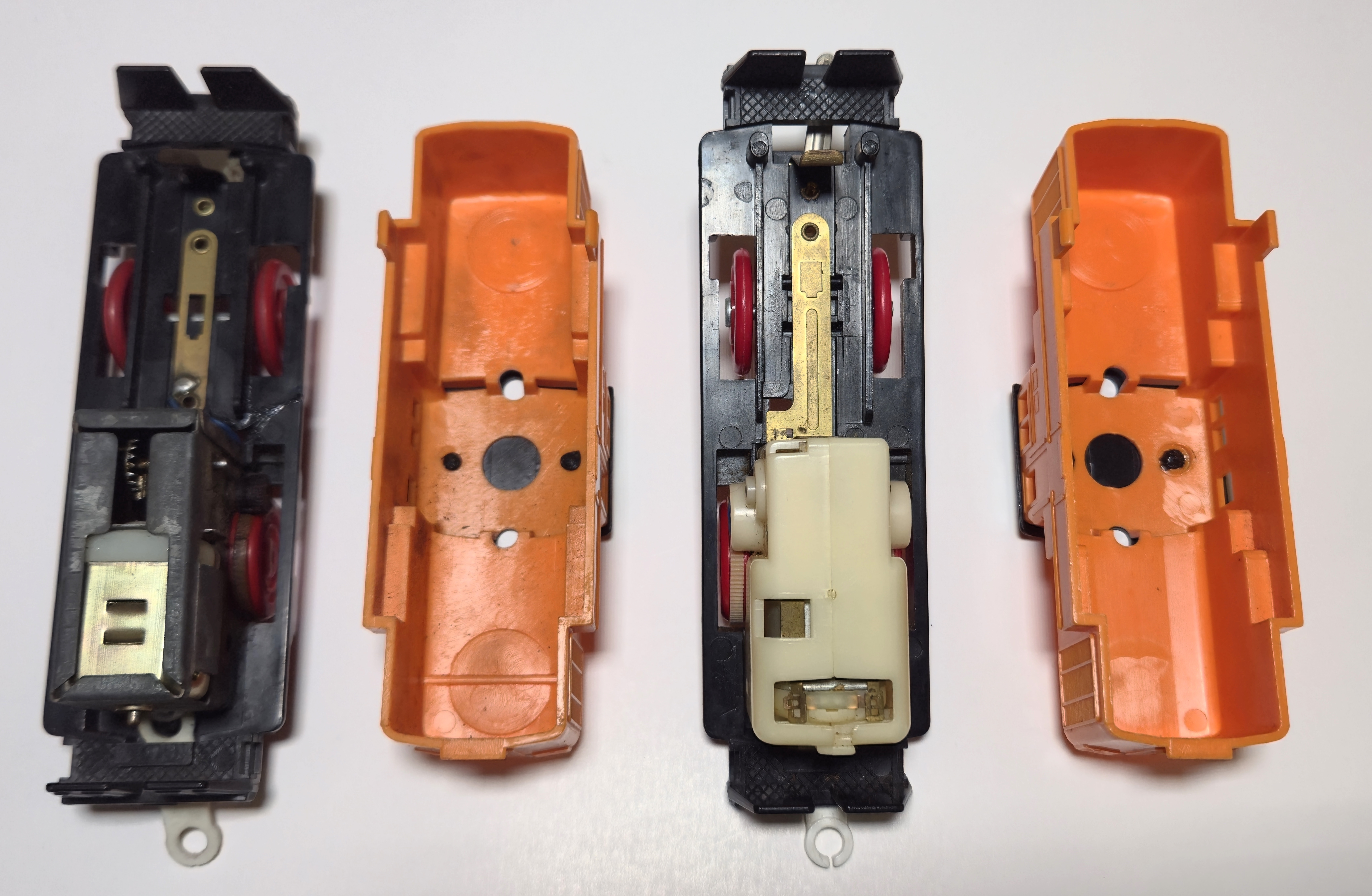
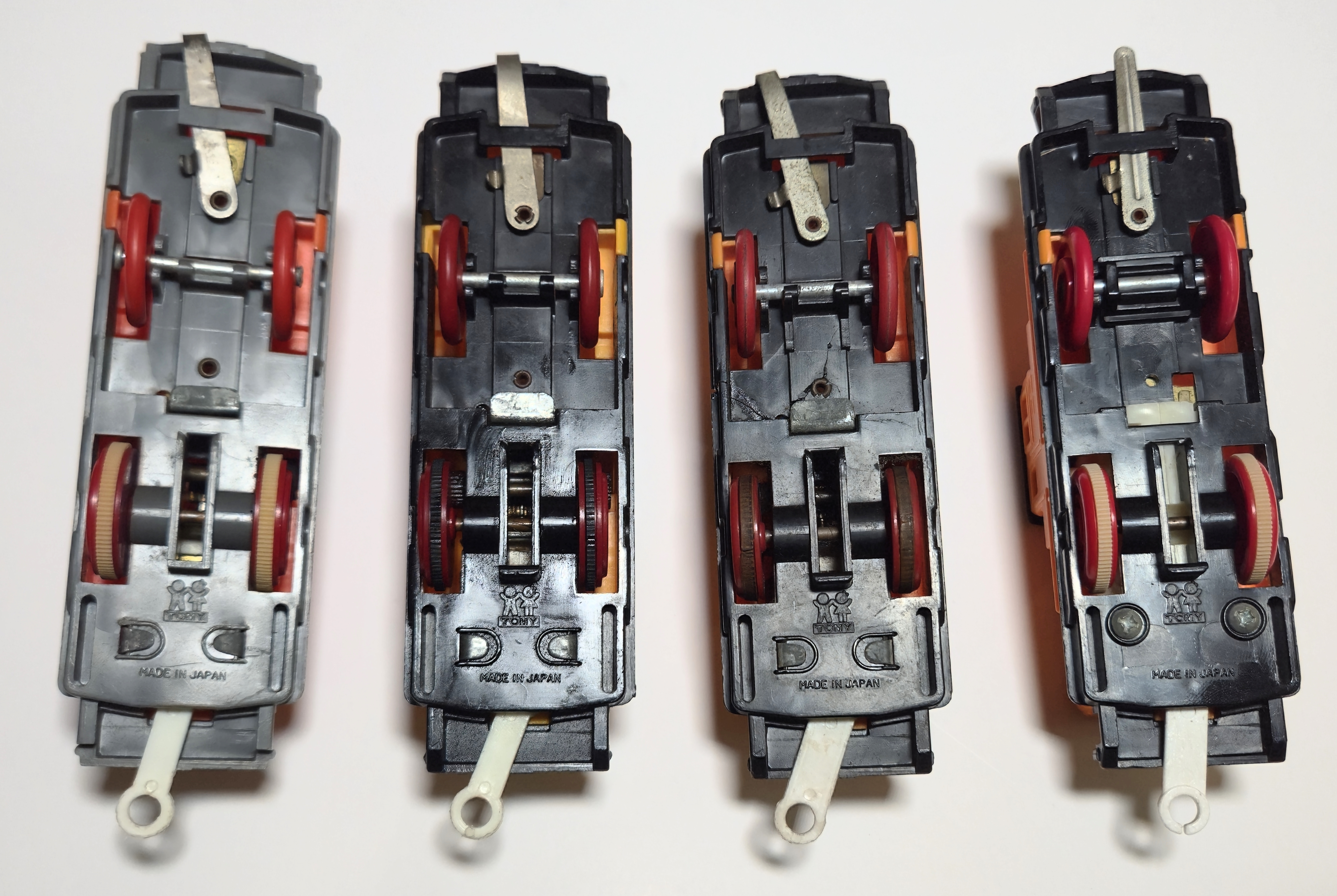
The upper body shell had some of the bracing under the rear molded vent removed to fit the slightly taller plastic gearbox. Here are the chassis' of the four primary old-power type DD-51s.
DD-51 Diesel Locomotive (1994)
In 1994 the DD51 was finally updated with a new axle-drive gearbox. The wheels transitioned from red to yellow and the power switch sticks out of a portion of the cab roof. The chassis continued to include the old "boy and girl" Tomy logo and the remnants from where the all-metal gearbox originally clipped into place can still be seen.
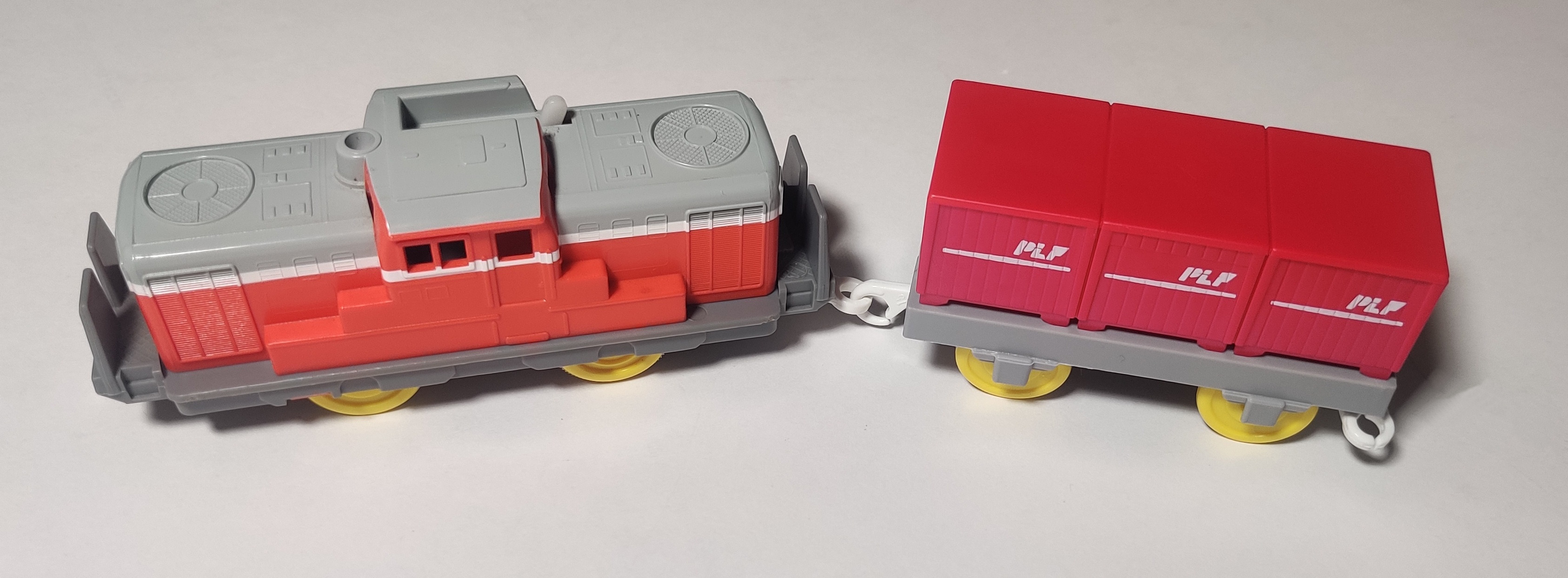
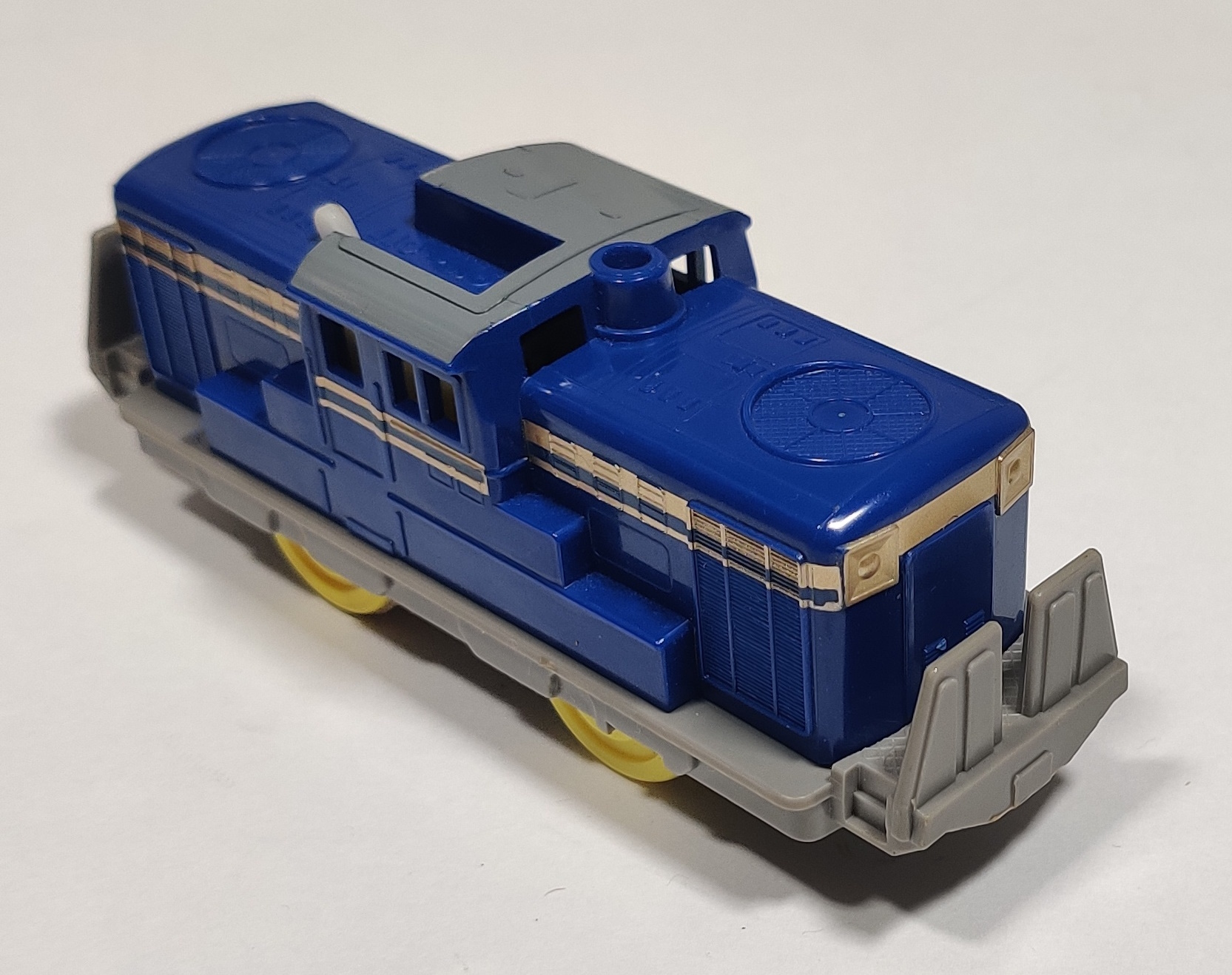
Although I do not currently own the individual release, the same molding was used in a few sets, such as the First Try Set Red, which includes a very nice looking DD51 with grey chassis and roof and other extra details, and the Blue Train-livery DD51 in the Motor Tomica Basic Set.
K-01 DD51 851 (2003)
As part of the push for more accurate and detailed models in the early 2000s, Plarail released two individual DD51s in 2003 with individual running numbers and a more realistic livery. These were released in 9th generation boxes. K-1 DD51 851 was later rereleased in 2011 as KF-03 DD51 851. It is identical to the DD51 1150 shown below other than the running number. The real life 800 series DD51s did not include a steam generator, which was used on other DD51s to heat passenger cars, as the 800 series were built to haul freight trains.
K-02 DD51 1150 (2003)
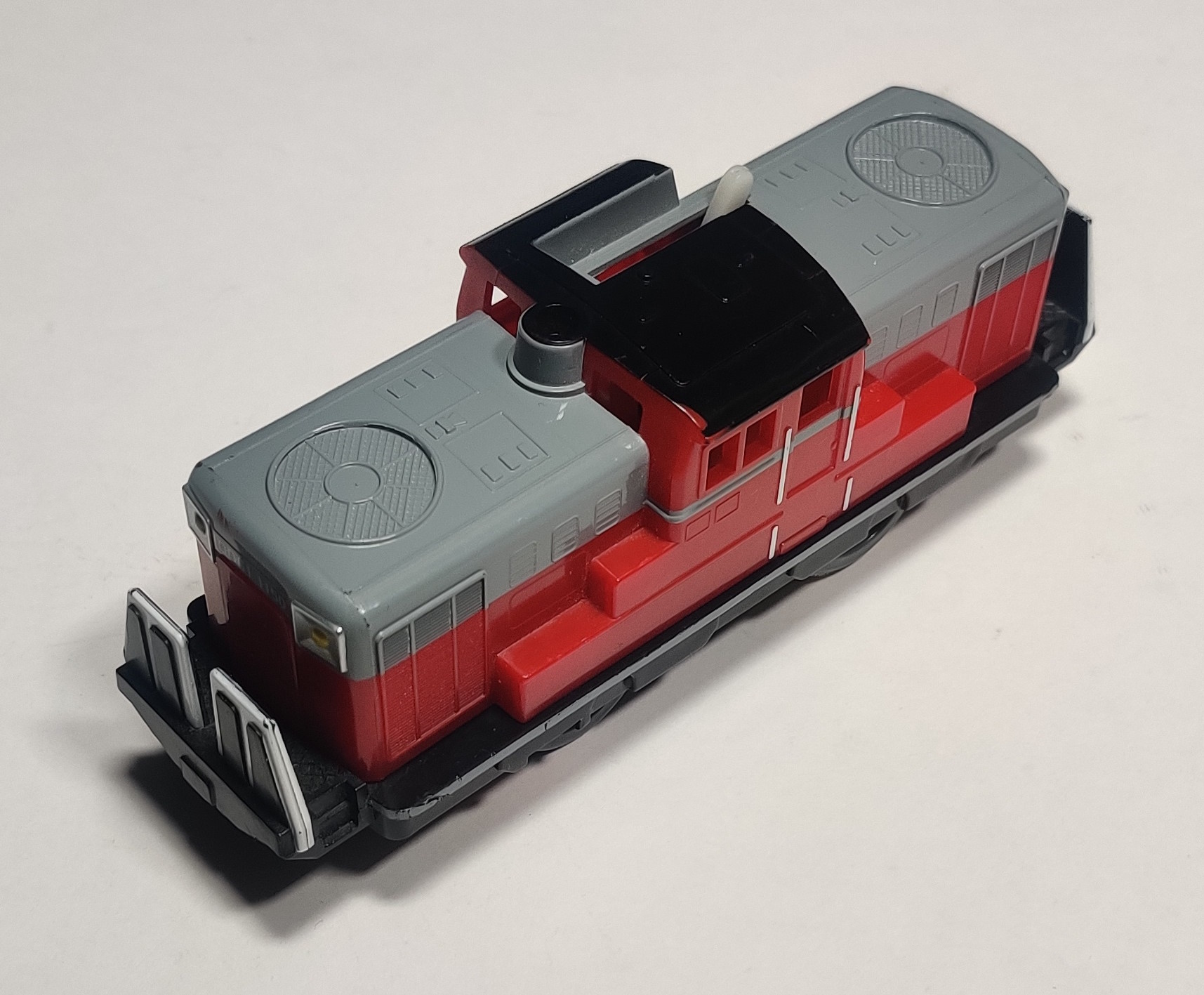
At the same time as number 851s release, Tomy also released a similarly liveried DD51 with the running number 1150. The real life DD51 1150 was a "full-duplex" machine and included pipework to connect the brakes of multiple units together when running multiple engines together.
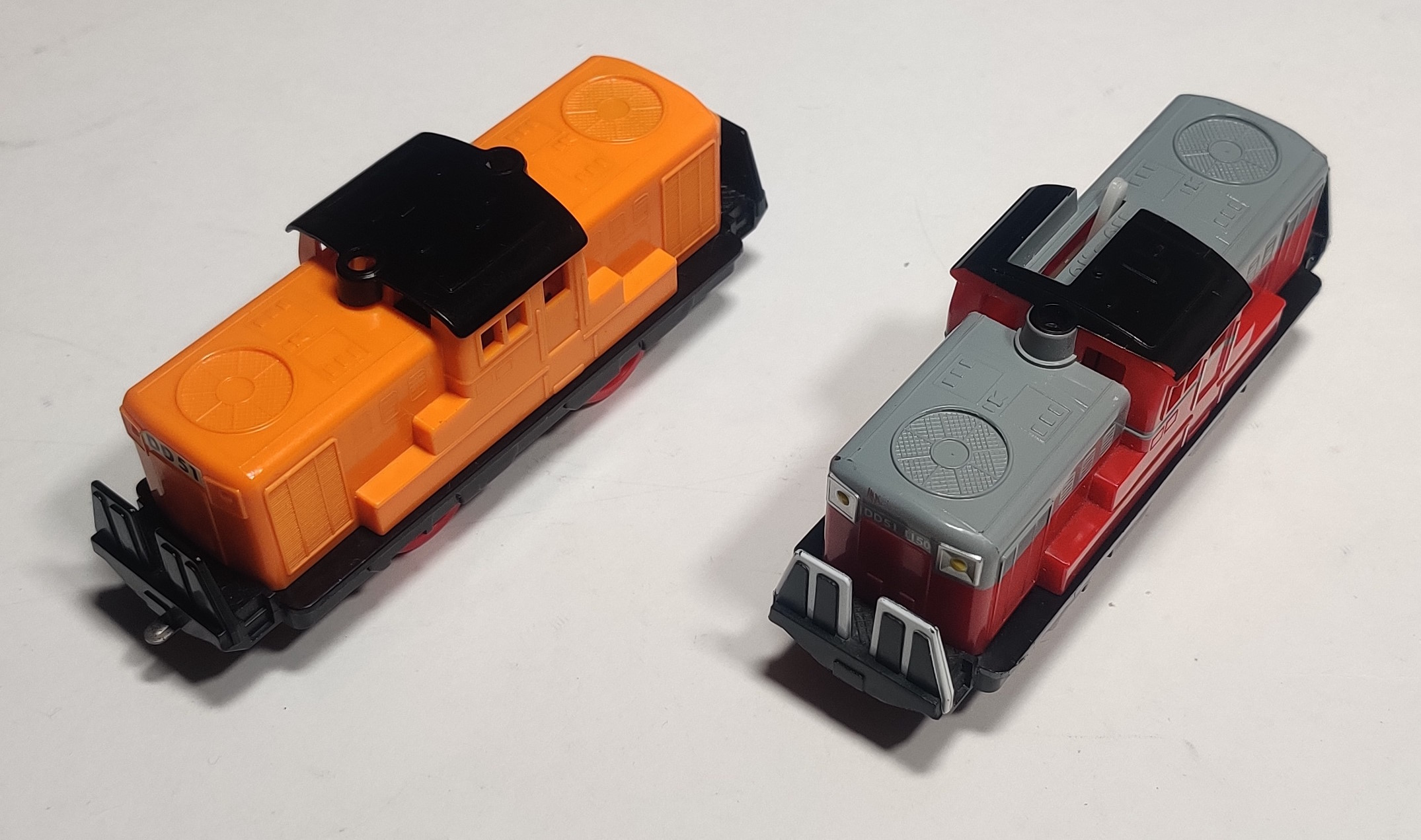
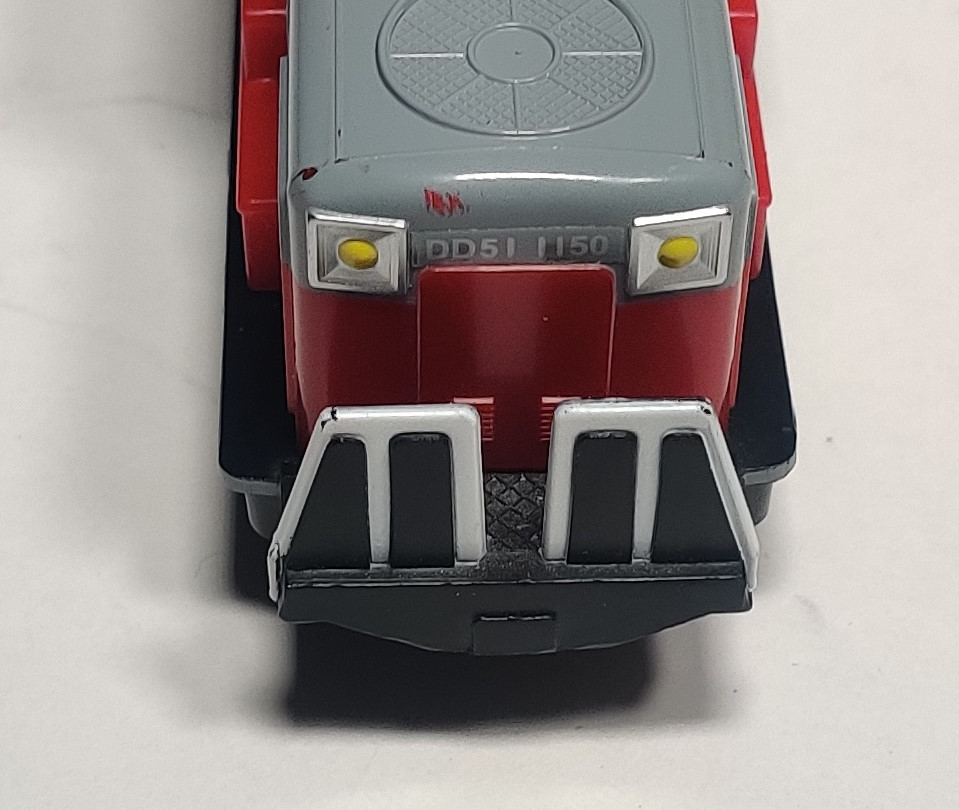
Straight away you can spot many places where the detail of the DD51 has been improved. The chassis has lining on the running board and front and rear railing and the body shell has additional lining and picked-out headlights. Although a small variety of more detailed DD51s were included in sets in the late 90s and early 2000s, 2003 marked the first time a more realistic DD51 was sold individually.
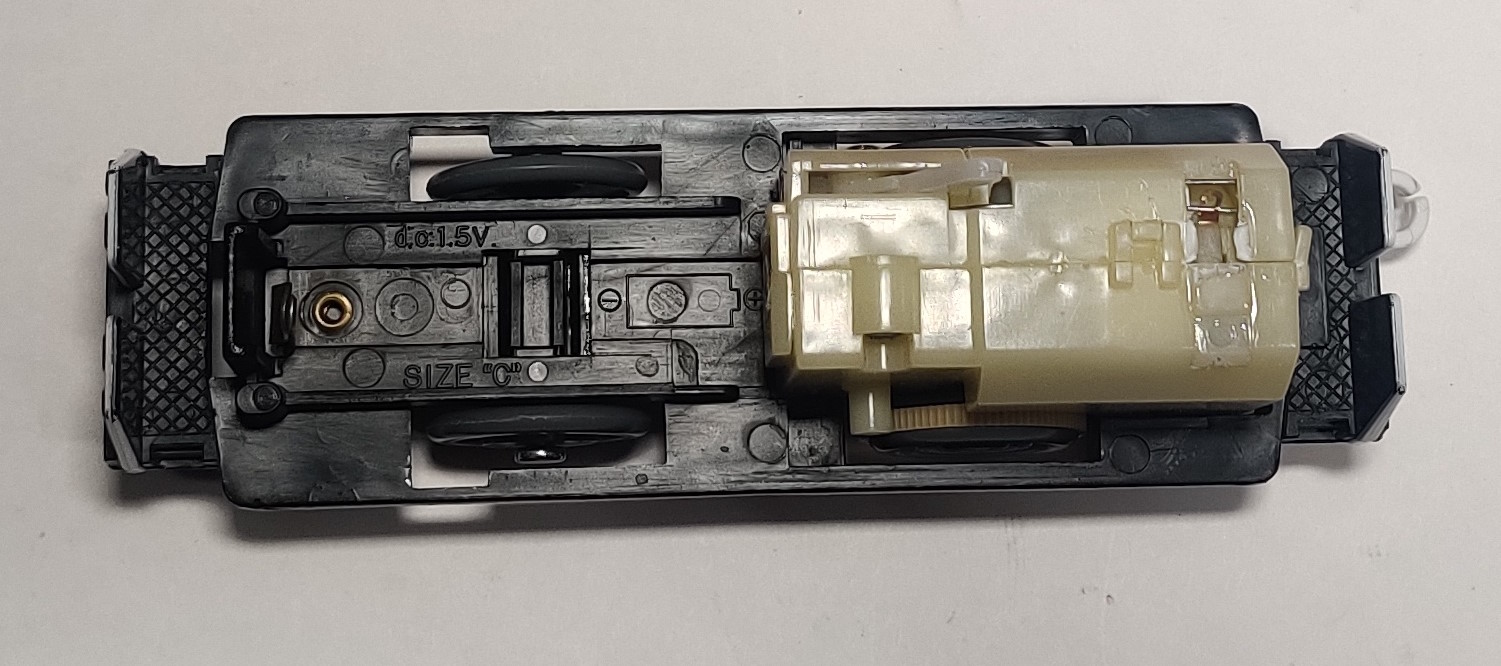
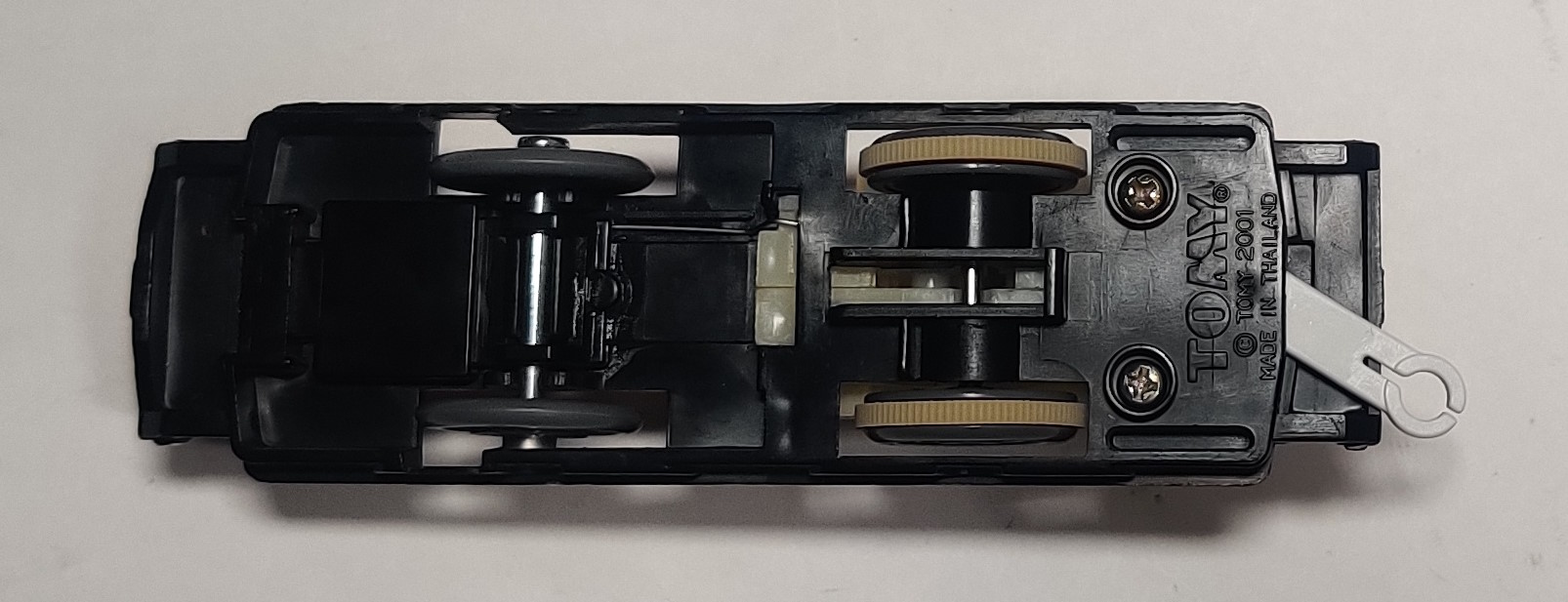
The chassis contact strips are the same style as the older new power DD51 but has updated molding with the new Tomy logo. If you look closely, remnants from previous chassis changes include the outline of where the original metal rim-drive gearboxes were installed decades prior.
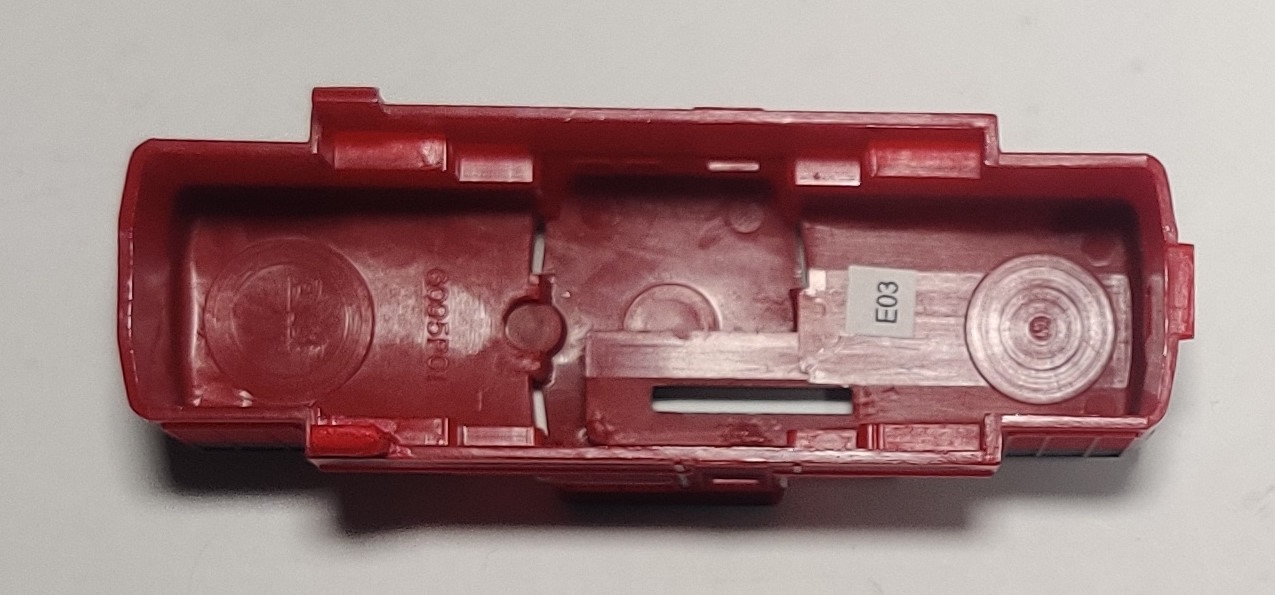
My DD51 1150 was produced in May 2003, fairly early on in the DD51 1150's life. One body clip was broken off when I purchased it used but I replaced it with a 3D printed replacement.